













in the foothills of the Ozark Mountains in Missouri, High Adventure Ranch offers all of the excitement of western big game hunting without the costs and hassles.















Be prepared for a fair chase hunt! With over 3 square miles of prime natural habitat, our ranch provides challenges to even the most seasoned hunter, but our expe rienced guides and “No Game, No Pay” policy practically ensure that you won’t go home empty handed. In addi tion, High Adventure’s hunting season is year-round, allowing ample time to fit the most demanding schedule.
While our whitetail, elk, wild boar and red stag hunts top our hunter’s most popular lists, hunters from around the world have visited our ranch, hunting everything from American bison, black buck, fallow deer to Spanish goats and African game.
So, whether you desire a 10-point whitetail mount for your trophy room or simply the thrill and challenge of taking down one of our many elusive big game animals, High Adventure Ranch guarantees memories of an unparalleled hunting experience that will bring you back again and again.


PUBLISHER
James R. Baker
GENERAL MANAGER
John Rusnak
EDITOR-IN-CHIEF
Andy Walgamott
OFFICE MANAGER / COPY EDITOR
Katie Aumann
COPY EDITOR
Alyssa Stout
LEAD CONTRIBUTOR
Frank Jardim
CONTRIBUTORS
Cassidy Caron, Larry Case, Scott Haugen, Phil Massaro, Mike Nesbitt, Paul Pawela, Nick Perna, Shawn Vincent
SALES MANAGER
Paul Yarnold
ACCOUNT EXECUTIVES
Mamie Gri n, Riland Risden, Mike Smith DESIGNER
Lesley-Anne Slisko-Cooper
PRODUCTION ASSISTANT Kelly Baker
WEBMASTER / INBOUND MARKETING
Jon Hines, Jon Ekse

INFORMATION SERVICES MANAGER Lois Sanborn

ADVERTISING INQUIRIES ads@americanshootingjournal.com
ON THE COVER
TactaLoad’s Mike Lavergne invented the FLASH-5, an integrated shotgun buttstock storage system for up to five shells, providing convenient storage, protection from the elements and easy reloading access. (TACTALOAD)
Website: AmericanShootingJournal.com Facebook: Facebook.com/AmericanShootingJournal Twitter: @AmShootingJourn
MEDIA INDEX PUBLISHING GROUP 941 Powell Ave SW, Suite 120, Renton, WA 98057 (206) 382-9220 • (800) 332-1736 • Fax (206) 382-9437 media@media-inc.com • www.media-inc.com

TactaLoad’s easy-to-mount and indestructible five-shell buttstock accessory provides shotgun shooters faster access to rounds than side saddle carriers. With an eye toward self-defense, Paul Pawela takes a look at this unique product and the man who invented it.
Belgian Andre Meurisse experienced the last Nazi offensive of World War II as a 7-year-old who was wounded during the December 1944-January 1945 fighting between the German and Allied armies. With the 78th anniversary of the Battle of the Bulge next month, Frank Jardim shares his remarkable story.
November brings Veterans Day, and this month we cele brate Major John J. Duffy and Specialist Fives Dwight W. Birdwell and Dennis M. Fujii, who were recently awarded with the Congressional Medal of Honor for their Vietnam War heroism and deeds.
There are two species of wapiti in the West and what’s more, there are two kinds of bulls: those that migrate, and those that don’t. Our expert Scott Haugen serves up tactics for pursuing pursuing Roosevelts in their coastal and Cascade hideaways and Rocky Mountain elk in and on their way to winter range.
The heights are a constant call for Cassidy Caron and when the bulls are bugling, there’s no stopping her from head ing afield. She shares another of her incredible Canadian hunting stories, this one from a part of British Columbia “accessible only by horse, untouched by resource extraction and enclosed in pure wilderness.”

Where hollowpoints were once shunned in deer camps for their unwelcome effects on game meat, today’s versions “rank among the toughest bullets available.” So writes Phil Massaro, who takes a look at the evolution of the projectile and modern offerings for hunters.
For many young shooters over the ages, a long, slender package under the Christmas tree has been their entry into the world of shotguns. And if you’re planning on wrapping up just that sort of present for your kiddo this holiday sea son, Larry Case has some things and models to consider.

LEGAL SPOTLIGHT: WHAT NOT TO SAY AFTER A SELFDEFENSE SHOOTING
Shawn Vincent has practical guidance for when you’re forced to use deadly force and police begin their investigation.

LAW ENFORCEMENT SPOTLIGHT: CHILD SAVED BY QUICKTHINKING COP
When someone frantically waved down Concord, California, Police Department Officer Aaron Khamosh, he had to act fast to save a 2-year-old who had somehow gotten ahold of fentanyl.
Mike Nesbitt’s search for a shorter revolver in this historic caliber turned up a 5 1/2-inch-barrelled Cimarron Open Top. He shares more details about the .44 and, more importantly, how it shoots.




C&E Gun Shows cegunshows.com
November 5-6Harrisburg, Pa.PA Farm Show Complex
November 5-6Winston-Salem, N.C.Winston-Salem Fairgrounds
November 12-13Concord, N.C.Cabarrus Arena & Events Center
November 12-13Sharonville, OhioSharonville Convention Center
November 12-13Zanesville, OhioMuskingum County Fairgrounds November 26-27Columbus, OhioWestland Mall
Crossroads Of The West Gun Shows crossroadsgunshows.com
November 4-5Logan, UtahCache County Fairgrounds
November 5-6Tucson, Ariz.Pima County Fairgrounds
November 12-13Mesa, Ariz. Centennial Hall
November 12-13San Bernardino, Calif.National Orange Show Grounds
Florida Gun Shows floridagunshows.com
RK Shows rkshows.com
Real Texas Gun Shows therealtexasgunshow.com
Tanner Gun Shows tannergunshow.com
Wes Knodel Gun Shows wesknodelgunshows.com
November 5-6Miami, Fla. Miami-Dade Fairgrounds
November 26-27Orlando, Fla.Central Florida Fair Ground
November 5-6Lebanon, Tenn.Wilson County Expo Center
November 5-6Somerset, Ky.The Center for Rural Development
November 12-13Jackson, Tenn.Jackson Fairgrounds Park
November 12-13Clarkesville, Ga.Habersham County Fairgrounds
November 19-20Cartersville, Ga.Clarence Brown Conference Center
November 19-20Gray, Tenn. Appalachian Fairgrounds November 26-27Lawrenceville, Ga.Gwinnett County Fairgrounds
November 26-27Lebanon, Mo.Cowan Civic Center
November 5-6Harker Heights, TexasHarker Heights Event Center
November 12-13Belton, TexasBell County Expo Center
November 18-20Pueblo, Colo.Colorado State Fairgrounds
November 25-27Aurora, Colo.Arapahoe County Fairgrounds
November 5-6Albany, Ore. Linn County Expo Center November 19-20Centralia, Wash.Southwest Washington Fairgrounds
Note: Covid-19 restrictions have largely been eased across the country, but always confirm events before attending.
To have your event highlighted here, send an email to kaumann@media-inc.com.

November 10
TWS November Training Camp Colorado Springs, Colo.
November 4-6
2022 Louisiana Section Gator Classic Princeton, La.
November 5-6
The Glock Showdown in Savannah V Fleming, Ga.
November 5-6
Nebraska/South Dakota Border War McCook, Neb.
November 6 Fall Indoor High Lonesome Shoot Lewiston, Idaho
November 12
Turkey Shoot 1 Lumberton, N.C.
November 12
Red Clay vs. Tennessee Chatsworth, Ga.
November 12
New Year November Shoot Eaton, Colo.
November 5
Battle of the Berms III Tavares, Florida
November 6
Holbrook Sportsmen’s Club November IDPA Holbrook, Mass.
November 20 International Air Gun Maspenock Rod and Gun Milford, Mass.
November 9-13
2022 USPSA Area 2 Championship Mesa, Ariz.



November 5-6 Duel in the Desert XVI Tucson, Ariz.
November 19-20
Foothills GSSF Match I Cherryville, N.C.
November 12-13
2022 Veteran’s Day Shoot Eugene, Ore.
November 13 Turkey Shoot II Lumberton, N.C.
November 13
Turkey Trot Shoot Stephenville, Texas November 13 Ridin on Red Clay Chatsworth, Ga.
November 18-19 Road To Helldorado New River, Ariz.
November 7
Lowcountry Shooters IDPA Match
North Charleston, S.C.
November 12
H2O Fowl Farms IDPA Club Match Dunn, N.C.
November 12
CCSC Monthly IDPA Match Edgemoor, S.C.
November 20
Desperados on the Range Corona, Calif.
November 20
Bay State Bandits Gobble Fest and Turkey Shoot New River, Ariz.
November 20
The Morning After – Road To Helldorado New River, Ariz.
November 26
Helldorado Better Late then Never Tombstone, Ariz.
November 13
Richmond IDPA Local Match Richmond, Calif.
November 21
Lowcountry Shooters IDPA Match North Charleston, S.C.
November 26
IDPA Austin Rifle Club Manor, Texas
Note: Covid-19 restrictions have largely been eased across the country, but always confirm events before attending.








The Battle of the Bulge, and the Americans’ brave stand at Bastogne in particular, has fascinated me ever since I was a boy when I first heard the stories from the men who survived it, and I watched it dramatized in Hollywood. e Academy Award-winning 1949 movie Battleground remains one of the best, and two episodes of the 2001 miniseries Band of Brothers are likewise excellent.
Strategically, the Bulge – which began on December 16, 1944, and continued for five weeks – was one of the most important battles of World War II. It was Hitler’s last all-in gamble to win the war on the Western Front by splitting the Anglo-American line and capturing the port of Antwerp. He came close to pulling it off, but what tripped him up was the tenacity of the American enlisted men and noncommissioned and field-grade officers on the ground who refused to yield. ough it was a watershed
for the United States Army (it was their “biggest and baddest” fight; the number of troops involved is eclipsed only by Operation Desert Storm in 1991), they delayed the attacking armies, and time was something the Germans could not spare.
Bastogne, Belgium was important because it was at the confluence of a major road network. Arriving in the nick of time, American troops thwarted the German infantry, tank, artillery and air attacks for nine days. e German demand for their surrender was rebuffed with a one-


A military hero’s funeral was held for Germain in September 1944. He was betrayed as an informant and murdered by the Gestapo. Young Andre is the boy second from left at bottom. The murder of his teacher personalized the war for Andre.

(COURTESY ANDRE MEURISSE)
word response: “Nuts!” Encircled and cut off, but undaunted, the Americans held Bastogne until relieved by forces from General George Patton’s ird Army on December 27, 1944.
e defense of Bastogne was a series of small unit actions, and I’ve explored its many battlefields over the years with the guidance of Andre Meurisse, a retired Belgian Army officer who lived through the battle himself as a child. He spent his life in the area and knows the terrain intimately, and his dedication to its history is apparent in the hundreds of relationships he’s established over the decades with battle participants and witnesses.
He started giving free tours to Americans in 1965 and has since given thousands of them. My last visit to Bastogne in September 2017 was my third time with Andre, who by then was 80 years old but still sharp and spry, retaining his vise-like handshake. On this last visit, Andre shared his personal experience of the Bulge.
ANDRE WAS JUST 2 years old when Germans occupied his country in 1940. His family lived in a little house in the little village of Senonchamps. Like for most boys, soldiers were a source of intense curiosity for Andre. He was awestruck when his uncle Marcel visited in the uniform of the Regiment Chasseurs Ardennais with his cartridge boxes and rifle. eir unit insignia was a wild boar head, and their motto translates to “Resist and bite.” To Andre’s delight, his uncle let him touch his rifle. When the Germans invaded on May 10, 1940, the Belgian military fought back to the extent they could. Heavily outmatched, they were forced to surrender just over two weeks later.
Glimpses of war and the constant presence of German soldiers were a part of Andre’s childhood; but, in the way that perhaps only a child can be, he wasn’t partisan. He often saw planes dogfight in the sky, but he didn’t root for Germany or Britain. A German military encampment set up


close to their home and the soldiers took over the family’s kitchen three times a day to cook for the troops. Because the soldiers cooked for the family too, as well as cleaned up, Andre’s mother thought they were a housewife’s dream come true. Some of the soldiers were quite fond of Andre. Two of them once brought him to their firing range not far behind the family home and allowed him to shoot a German Army Kar98 Mauser bolt action. As Andre was only 5 or 6 years old, the soldiers helped him support the rifle so he could fire it safely and not get injured by the heavy recoil. It was his first experience firing a gun. He loved it.
War at a safe distance offered many things of interest to small boys. Andre visited a British Lancaster bomber that crash-landed in a nearby field. e pair of German soldiers “guarding” the aircraft didn’t mind curious local people climbing inside


it. For most, it was the first time they saw an airplane up close. Andre was intrigued by the radar-obstructing chaff he found in the fuselage. He couldn’t imagine what the thin aluminum foil strips were for. (Neither could any of the other villagers.) Andre took some home to save for decorating their Christmas tree.
WHILE CRASHED AIRPLANES were a source of fascination for Andre, they were an alarm bell to members of the Belgian resistance. When an allied plane went down, it meant there might be aviators needing rescue. e resistance organized a chain of safe houses to hide downed air crews, help them avoid capture, and get them back to England. Andre’s schoolteacher, Mr. Germain Jacquemin, was an informant for the resistance and maintained hidden bunks in his home for fugitives to rest before moving on. He was betrayed by a fellow Belgian, and the Gestapo beat him savagely and put his bloody body in the trunk of their car with the trunk lid closed on his neck. Every time the car bounced on the rough road, the trunk bounced on his throat. Andre witnessed his kind teacher’s suffering as the Gestapo drove past his house. at was the last time anyone saw Mr. Jacquemin alive. is was Andre’s first personal connection with the horrors of war. Rather than jeopardize the safety of his family, Andre’s father chose not to aid the resistance in any way. ere were German soldiers in his home every day with his wife and son. In effect, his family was already hostage.
After the Allied invasion of France at Normandy, the Belgian resistance was emboldened to act, and civilians paid the price. As the Germans prepared to retreat from Andre’s village, the resistance attacked a soldier in their rear guard. In response, the German commander ordered the destruction of all houses in Andre’s village. On the scheduled day of destruction, two German soldiers knocked on their door and politely asked for permission to use the second floor to observe the
enemy’s front line. Andre’s father agreed for sensible reasons of family preservation. e soldiers carefully hung their loaded MP40 submachine guns on coat pegs by the door and climbed the stairs. For a moment, Andre’s father considered picking one up and killing both Germans when they came down the steps. He quickly put the reckless thought out of his mind.
When the soldiers came back downstairs a short time later, they thanked the family, picked up their guns and said goodbye. Before departing, one of the soldiers reached into his pocket and pulled out a handful of taffy candy for Andre. He told the boy to take it because he didn’t expect to live long enough to eat it. Later that day, September 10, 1944, the Meurisse family saw their first American soldiers. e village was liberated before the fleeing Germans could burn it.
Shortly after the American liberation, the body of Mr. Jacquemin was discovered in a field, shot in the back. He was a given a hero’s funeral on September 27, 1944. Andre and his classmates attended.
IN OCTOBER 1944, Andre’s family moved to Bastogne so his father could be closer to the head office of the electric company he worked for. Most thought they had seen the last of the Germans. ey were wrong. Two months later, the city was full of battered, disorganized remnants of U.S. units once stationed nearly 30 kilometers to the east, followed by the sudden arrival of fresh American soldiers from the 10th Armored and the 101st Airborne Divisions. e sounds of nearby battle, the incoming casualties and, worst of all, the frequent artillery and air bombardment led Andre’s father to conclude the family had to get out of Bastogne. He thought if they must die, it would be more humane to die in the open trying to escape rather than be crushed under rubble of their burning house. He was not alone. About 20 others had drawn the same conclusions and tied a few possessions to their bicycles, ready to push along the road west.
Andre’s father told him to dress heavily for protection from the bitter cold. ey loaded their things on the horse-drawn coal cart of the neighborhood coal man who also
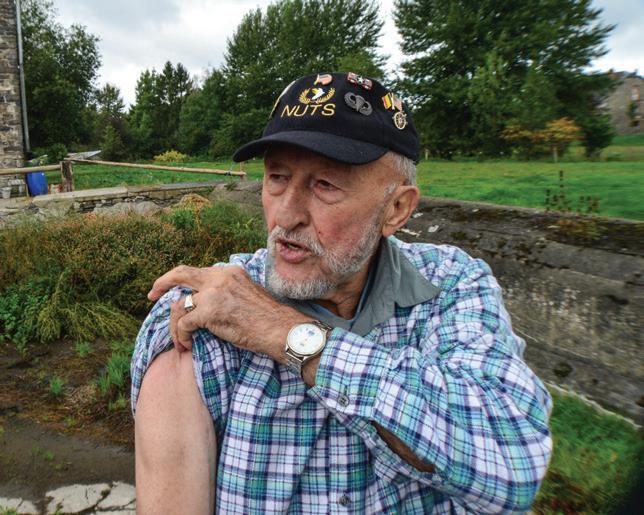
hoped to escape the perils of a besieged town. Andre was the only child in their refugee group. ey walked northwest out of town along a snowy road toward the village of Hemroulle, which was about 3 miles away. En route, they were surprised by an American paratrooper who was hidden from view in a foxhole. He jumped up with the bayonet fixed on his M1 rifle and angrily challenged them. Why he was so angry was hard to discern since they did not speak English, but they concluded the soldier did not want civilians in the area. ey quickly moved on.
When they reached Hemroulle, a heavy German artillery barrage greeted them. ey saw exploding shells strike on either side and close enough for them to feel the concussion. e blasts threw debris high in the air and sent soldiers and their refugee group running for cover. ey found shelter in the cellar of a nearby house but the coal man’s horse had to stay outside. ey waited about half an hour until the shelling stopped before resuming their trek, but the barrage terrified the horse and it would go no further. Andre’s father transferred their

possessions to the bicycles of their fellow refugees who willingly helped them and continued northwest –without the coal man, his horse, or cart – along the road through farmland and forest towards the village of Champs, about 2 miles away. Unfortunately, the battle beat them to it.
BASTOGNE WAS ENCIRCLED by the Germans on December 21, though there was no way Andre’s father could have known that. As he tried to lead his family west to safety, the Germans were trying to break the American lines in his path. When the refugees approached the outskirts of Champs, they heard the sound of heavy rifle and machine gun fire and saw American soldiers running past them toward it. at, and the incoming artillery fire, which they could feel and hear but not see, caused them to run for the cover of ditches along the side of the road. Champs was on the front, so they changed course and took the road south to the village of Mande Saint-Etienne, another 2 miles away, while the sounds of battle continued on their right.

ey moved quickly but again
the battle blocked their escape. e fighting was pitched. ey passed through the village and turned west on the paved road to Namur and Brussels. As they approached the village’s western outskirts, the noise of nearby small arms fire around them intensified. e refugees ran for shelter in the last house on the left side of the road. Andre, with his short legs, nearly stepped on the bodies of two dead German soldiers on the ground just outside the house. e refugees piled into the cellar. Soon two American 101st Airborne soldiers joined them to escape the gunfire. Andre noticed that sweat ran off their necks despite the frigid weather. e fighting ebbed and when the soldiers left, they accidentally dropped a pack of cigarettes, which the refugees shared with great relish before departing the cellar themselves.
Night was approaching, and Andre’s father did not want to risk walking into another battle. He knew the three Cowett brothers who lived near the opposite side of Mande Saint-Etienne. ey had a stone farmhouse with a very sturdy vaulted roof and a stable on one side.

He asked the farmer brothers for shelter for the night, and they obliged his group the use of their stable and gave them some food. Seven other refugees, also with their possessions strapped to bicycles, were already there. ey all made their beds from straw on the stone floor of the stable and fell asleep. Exhausted as they were, it would not be a peaceful night. ey awoke to the sounds of renewed battle outside: machine gun fire, shouting and the clack of heavy hobnailed boots against cobblestones. Suddenly the stable door was kicked open and two German soldiers, with their burp guns poised to fire, stepped into the glow of the single petroleum lamp hanging in the stable. ey looked at the fearful refugees in the straw silently. Andre thought he was living the last moments of his life, a realization likely shared by the adults, who noticed that both soldiers were drunk. One stepped forward undoing the fly of his pants. Laughing, he urinated in all the buckets of fresh milk lined up by the doorway. en they heard a voice yelling in German outside, and the drunken duo turned and left the stable. e German night attack took the village, but an American counterattack recaptured it by dawn. e next morning, weary but relieved, the refugees poured out the polluted milk and washed the buckets. Andre and his parents were sharing some breakfast with the farmers in their living quarters when they heard airplane engines approaching rapidly, followed by the whistle of falling bombs. Everyone dashed toward the stable, and moments later a huge deafening blast rocked the stone farmhouse, collapsing the kitchen where they just were and setting fire to the manure pile outside. Some soldiers right outside were killed. e stone building next door was also hit by a bomb and was burning. American soldiers dashed for cover as the planes returned for strafing passes. Andre watched through the transom over the stable door and saw soldiers running by with wounded
comrades on litters. At the crossroads beyond the burning house next door, soldiers laid out a big cherry-red cloth square on the ground. Andre would later learn that it was a marker panel to alert friendly planes of their positions. A pair of American 9th Air Force P-47 underbolt fighterbombers mistakenly attacked them not realizing the Americans once again controlled the town.
AFTER THE ATTACK, Andre told his father that his right shoulder hurt. Seeing no apparent injury on the boy, his father dismissed it. When Andre repeatedly complained about increasing pain, his father found beneath all the layers of Andre’s clothing that his undershirt was stained with congealed blood and virtually glued to his shoulder. He soaked it in water to soften it, and upon removing it, he found a ¾-inch hole with no exit wound. At best it was a puncture wound; at worst it was a bomb fragment or other piece of debris driven into Andre’s shoulder, where it would fester and become infected unless removed. Andre’s

father ran his pocket knife blade through a candle flame to sterilize it and then probed the wound for metal. For a boy of only 7, Andre handled the surgical exploration bravely. His father’s heart sank when he couldn’t find the foreign object. e wound was much deeper than it looked on the surface.
His father ran to the American medics who were treating their wounded and managed to convey to them, without English, that a child was hurt and needed help. A medic dressed Andre’s shoulder and left, which angered his father who knew he needed a surgeon. With the help of the village priest to translate, they learned the surgeons were at the 101st Airborne’s divisional aid station back in Bastogne. e soldiers agreed to drive Andre there with their own wounded, but only one parent could accompany the child. Andre’s father went with him, reluctantly leaving his wife Fernande on her own at the edge of the front line with the refugees. Father and son sat in the back of an open truck, and the soldiers gave them blankets to keep warm.

Andre’s parents didn’t fully appreciate how bad off the Americans were. ey were surrounded with no means for resupply, and their ability to treat ever-increasing numbers of wounded was desperately strained from the start. Virtually the entire collecting station of the 326th Medical Company just to the west had been captured by the enemy four nights earlier. 101st Airborne Sergeant Richard O’Brian was one of the few 326th medics not captured. At this time, O’Brian was working as a surgical assistant at the divisional aid station set up in the big Catholic seminary at the end of Grand Rue in Bastogne. (One of his grislier duties was clearing the amputated limbs from the upstairs; he threw them out the window where they fell into the bed of a cargo truck parked beneath.)
Back in Bastogne again, Andre was triaged by the American medics at the divisional aid station. Unfortunately for him, many gravely wounded were already there and for whom the immediate attention of the surgeons meant life or death. With their bloody hands full, the few medics and doctors at the divisional aid station worked to exhaustion and could not predict
when, or even if, they would be able to operate on Andre’s shoulder. His father took him back to their house, which, thanks to good fortune, still stood but was already occupied by neighbors whose homes were destroyed.
EVERY MORNING FROM the 23rd to the 26th, Andre’s father brought him to the aid station where medics changed his dressings and cleaned his wound, but still they did not operate. As the infection spread, Andre’s arm swelled to almost twice its size, turned grey and became very painful. On December 27, the German encirclement was broken and Andre was evacuated to the 107th Evacuation Hospital in Sedan, France. His stretcher was squeezed into the ambulance and tied up by the ceiling like a chandelier. Andre and his father completed the 51-mile trip by nightfall. e American Army doctors there operated and saved his arm, but events separated father and son three days later.
It was weeks before the family was finally reunited through the tireless efforts of his father. By then, the fighting had moved east; and father,
mother and son traveled to Sibret where Andre’s godmother lived. e intensity of the battle in and around the little village was apparent. Nearly all the houses were destroyed, and a knocked-out German MkIV tank sat on the roadside. A hundred feet beyond it, they saw the house they sought was damaged but still standing. It was clearly visible to them because the dwelling next to it was leveled. Fortunately, Andre’s godmother was unharmed, and she welcomed them inside. eir personal ordeal of battle was finally over. Alive together and with a roof over their heads during one of the coldest winters in years, they considered themselves very lucky.

I CAME INTO Andre’s story at its epilogue when he reconnected with the American military personnel that ultimately saved his arm and his life. In 1988 his ceaseless research of the Battle of the Bulge resulted in an unexpected reunion with a U.S. Army nurse who cared for him while he was at the 107th Evacuation Hospital in Sedan. ough he was too weak at the time to take much notice of her, she never forgot the little Belgian boy. She broke down in tears when she saw him nearly 40 years later; he cried too when she finally told him who she was. ey corresponded for years until the day she died, and he still corresponds with her children.
About 15 years later, Andre met former 101st Airborne medic Richard O’Brian, who I had the pleasure to visit Bastogne with. Although Andre’s father took him to the seminary aid station three times, they did not recall each other. Still, they embraced like father and son, tears in their eyes. Andre was just a little boy when the Battle of the Bulge upended his life, but because he lived through it, he shares a bond with everyone else that did. It goes both ways.
e magnitude of that bond showed in the tearful reunions of a former wounded boy, a tough U.S. Army medic and a kind nurse, none of whom ever knew the others’ names.




How three of our most recent awardees earned their Medals of Honor.
PHOTOS COURTESY OF CONGRESSIONAL MEDAL OF HONOR SOCIETYOn July 5, 2022, Specialist Dwight W. Birdwell was awarded the Congressional Medal of Honor – the nation’s highest military award. Indeed, the Medal of Honor is only bestowed upon those soldiers, sailors, marines and airmen whose bravery and valor go above and beyond.
In conjunction with Veterans Day this month, we at American Shooting
Journal thought it fitting to honor Birdwell, along with two other recent recipients of the award, by sharing their heroic stories here.
• Rank: Specialist Five
• Conflict/Era: Vietnam War
• Unit/Command: Troop C, 3rd Squadron, 4th Cavalry, 25th Infantry Division
• Military Service Branch: U.S. Army
• Medal of Honor Award Presentation Date: July 5, 2022
Specialist Five Dwight W. Birdwell distinguished himself by acts of gallantry and intrepidity above and beyond the call of duty while serving with C Troop, 3d Squadron, 4th Cavalry, 25th Infantry Division in the Republic of Vietnam on 31 January,

1968. On this date, C Troop was ordered to move south to help repel an enemy attack on Tan Son Nhut Airbase. As the C Troop column of tanks and armored personnel carriers approached the west gate of Tan Son Nhut Airbase, it came under intense enemy fire from a building to its right. Unbeknown to C Troop, it had driven directly into an enemy force consisting of three battalions. e column tried to push through the initial attack but the lead tank, crippled by a rocket-propelled grenade explosion, was blocking the way forward. C Troop immediately came under heavy enemy fire from both sides of the road.
Specialist Five Birdwell, upon seeing that his tank commander was wounded by enemy fire, immediately went to his aid. Under intense enemy fire, he lowered the injured tank commander to the ground, and moved him to safety. Specialist Five Birdwell then, with complete disregard for his own safety, mounted the tank and assumed the tank commander’s position. Standing in the tank commander’s hatch with the upper half of his body exposed to heavy enemy fire, Specialist Five Birdwell used the tank’s .50-caliber machine gun and 90mm main gun to suppress the enemy attack. With the ammunition for the 90mm main gun exhausted, he continued to fire the .50-caliber machine gun until it overheated. At this point, Specialist Five Birdwell, rather than abandoning his position, continued to engage the enemy with his M-16 rifle, sometimes exposing his entire body to enemy fire in order to engage the enemy from a better vantage point.
When a U.S. helicopter crashed nearby, Specialist Five Birdwell, under withering enemy fire, dismounted and moved to the helicopter where he retrieved two M-60 machine guns and ammunition. After giving one M-60 and ammunition to a fellow soldier, he remounted his tank and used the other M-60 to again engage the enemy. Specialist Five Birdwell continued to engage the enemy with complete disregard for his own safety until the M-60 he was firing was hit by enemy fire. Specialist Five Birdwell, now wounded in the face, neck, chest, and arms, dismounted the tank but refused to be medically evacuated. Instead, Specialist Five Birdwell, under enemy fire, rallied fellow soldiers to advance toward the front of the armored column where they set up a defensive position by a large tree. From this position, he and the other soldiers engaged the enemy with M-16 fire and grenades. As the enemy fire lessened, Specialist Five Birdwell gathered ammunition from disabled vehicles and helped wounded soldiers move to safer positions. His leadership and tenacity under fire inspired the other C Troop soldiers to continue fighting against the superior



enemy force, and directly contributed to the enemy’s ultimate defeat.
Specialist Five Birdwell’s extraordinary heroism and selflessness above and beyond the call of duty were in keeping with the highest traditions of military service and reflect great credit upon himself, his unit, and the United States Army.
• Rank: Major
• Conflict/Era: Vietnam War
• Unit/Command: Military Assistance Command Vietnam (MACV) Team 162, 5th Special Forces

• Military Service Branch: U.S. Army
• Medal of Honor Award Presentation
Date: July 5, 2022

Major John J. Duffy distinguished himself by acts of gallantry and intrepidity above and beyond the call of duty while serving as the senior advisor to the 11th Airborne Battalion, 2nd Brigade, Airborne Division, Army of the Republic of Vietnam in the Republic of Vietnam, during the period of 14 to 15 April, 1972. In the two days preceding the events of 14 to 15 April, 1972, the commander of the 11th Airborne Battalion was killed, the battalion command post was destroyed, and Major Duffy was twice wounded but refused to be evacuated. en on 14 April, Major Duffy directed the defense of Fire Support Base Charlie, which was surrounded by a battalion-size enemy element. In the morning hours, after a failed effort to establish a landing zone for resupply aircraft, he moved close to enemy anti-aircraft positions to call in airstrikes. At this time, Major Duffy was again wounded by fragments from a recoilless rifle round and again refused medical evacuation. Shortly thereafter, the enemy began an artillery bombardment on the base and he remained in an exposed position to direct gunships onto the enemy positions which eventually silenced the enemy fire. Following the bombardment, Major Duffy assessed the conditions on the base and personally ensured the wounded friendly foreign soldiers were moved to positions of relative safety and the remaining ammunition was appropriately distributed to the remaining defenders. Shortly thereafter, the enemy resumed indirect fire on the base, expending an estimated 300 rounds. Nevertheless, he remained in an exposed position to direct gunship fire on the enemy positions.

In the late afternoon hours, the enemy began a ground assault from all sides of the firebase and Major Duffy moved from position to position to adjust fire, spot targets for artillery observers, and ultimately to direct gunship fire on a friendly position which had been compromised. As the evening wore on, it became clear that the defenders could not withstand the overwhelming enemy forces and
he began to organize an evacuation of the firebase under the cover of night. With the goal of a complete withdrawal, Major Duffy was the last man off the base, remaining behind to adjust the covering fire from gunships until the last possible moment. When the acting battalion commander was wounded, he assumed command of the evacuation and maintained communication with the available air support to direct fire on the enemy.
In the early morning hours of 15 April, the enemy ambushed the battalion inflicting additional casualties and scattering some of the able-bodied soldiers. Major Duffy organized defensive positions during the ambush and ensured the friendly foreign forces could successfully repulse the enemy. After withstanding the ambush, he led the evacuees, many of whom were significantly wounded, to an established evacuation area, despite being continually pursued by the enemy. Upon reaching the exfiltration site, Major Duffy directed gunship fire on enemy positions and marked a landing zone for the helicopters. Only after ensuring all of the evacuees were aboard, did Major Duffy board while also assisting a wounded friendly foreign soldier in with him. Once on board, he administered aid to a helicopter door gunner who had been wounded during the evacuation.
Major Duffy’s extraordinary heroism and selflessness above and beyond the call of duty were in keeping with the highest traditions of military service and reflect great credit upon himself, his unit, and the United States Army.

• Rank: Specialist Five
• Conflict/Era: Vietnam War
• Unit/Command: 237th Medical Detachment, 61st Medical Battalion, 67th Medical Group
• Military Service Branch: U.S. Army
• Medal of Honor Award Presentation Date: July 5, 2022
Specialist Five Dennis M. Fujii distinguished himself by conspicuous gallantry and intrepidity beyond the
call of duty while serving as crew chief aboard a helicopter ambulance during rescue operations in Laos, Republic of Vietnam, during the period of 18 to 22 February, 1971. Specialist Five Fujii was serving with the 237th Medical Detachment, 61st Medical Battalion, 67th Medical Group. e team’s mission was to evacuate seriously wounded Vietnamese military personnel from the midst of a raging battlefield. e aircraft’s primary approach to the bullet-infested landing zone was thwarted by heavy volumes of enemy fire directed at the specialist’s helicopter. As the pilot made a second landing attempt, the

enemy concentrated a barrage of flak at the air ambulance which damaged the craft and caused it to crash in the conflict area, injuring Specialist Five Fujii. Moments later, another American helicopter successfully landed near the wreckage of the specialist’s airship and extracted all the downed crewmen except for Specialist Five Fujii, who was unable to board due to the intense enemy fire directed at him. Rather than further endanger the lives of his comrades aboard the second helicopter, Specialist Five Fujii waved the craft out of the combat area and remained behind as the only American on the battlefield. Subsequent attempts to rescue the specialist were aborted due to the violent antiaircraft fire. Specialist Five Fujii finally secured a radio and informed the aviators in the area that the landing zone was too hot for further evacuation attempts.
During the night and all through the next day, Specialist Five Fujii disregarded his own wounds as he administered first aid to the
allied casualties. On the night of 19 February, the allied perimeter came under ruthless assault by a reinforced enemy regiment supported by heavy artillery. Once again obtaining a radio transmitter, Specialist Five Fujii called in American helicopter gunships to assist the small unit in repelling the attack. For a period of over 17 consecutive hours, Specialist Five Fujii repeatedly exposed himself to hostile fire as he left the security of his entrenchment to better observe enemy troop positions and to direct air strikes against them. At times the fighting became so vicious that Specialist Five Fujii was forced to interrupt radio transmittal in order to place suppressive rifle fire on the enemy while at close quarters. ough wounded and severely fatigued by 20 February, the specialist bore the responsibility for the protection and defense of the friendly encampment until an American helicopter could land and attempt to airlift him from the area. As his air ambulance left the
battlefield, it received numerous hits and was forced to crash-land at another South Vietnamese Ranger base approximately 4 kilometers from the specialist's original location. e totally exhausted Specialist Five Fujii remained at the allied camp for two more days until yet another helicopter could return him to Phau Bai for medical assistance on 22 February.
Specialist Five Fujii’s extraordinary heroism and devotion to duty were in keeping with the highest traditions of military service and reflect great credit upon himself, his unit, and the United States Army.
THESE THREE SOLDIERS are true American heroes, exhibiting bravery, honor and valor of the highest order. American Shooting Journal would like to thank them, and all military veterans, for their service and sacrifice.
Editor’s note: Citations were excerpted from the Congressional Medal of Honor Society website (cmohs.org).


When it comes to full custom guns, whether it be custom revolvers, custom 1911s, or full custom large caliber rifles, the place to look first is Gary Reeder Custom Guns. In business for almost 40 years building some of the finest full custom guns, built to your specs. Reeder Custom Guns is a fully licensed firearm manufacturer and can build that very special gun you have always wanted. To see almost 70 different series of full custom guns, see our web site, or if you have questions feel free to call.









10 to 12 month delivery in most cases.
Gary Reeder Custom Guns • 2601 7th Ave. East • Flagstaff, Arizona 86004

think you should take this bull,” whispered my buddy as he studied the six-by-six high in the Rockies. “It’s up to you, but given this is the only bull we’ve seen all week, and with no storms coming, this might be all you get … unless you want to come back in a couple weeks.”

I should have done the latter, but I didn’t. Instead, we commenced a stalk, I connected on the shot, and soon we were filling saddle bags and heading o the dry mountain.
It was a bittersweet ending, and I’d be lying if I said I didn’t regret my decision, because a week later my hunting buddy sent a photo of a 392inch bull his daughter shot in the same spot and in nearly 3 feet of snow. I was disappointed in myself because the tag I held required many points to draw, and I knew better than to put a busy schedule ahead of nature.
Whether hunting migratory or homebody Rocky Mountain elk, or pursuing Roosevelts in the Pacific Northwest, matching your approach to the elk, the habitat and the pressure they’ve incurred, along with the weather, is key.



The Rocky Mountain elk tag I held was for a migration hunt, and my biggest mistake was heading into the Rockies knowing there was no snow. The vast herds lived at higher elevations in another unit for which I didn’t have a tag. With no snow to drive elk down, my hunt ended up being for resident bulls – and by November, the ones that were there were wise.
When planning a hunt for migratory elk, be flexible. The worst mistake you can make is putting your schedule ahead of nature’s. On migratory hunts, if the bad weather isn’t there to move elk, then you may not see one. Monitor storms and time your hunt after a few feet of snow has fallen in higher elevations. It takes a lot of snow to push elk from their summer and fall range, so be patient.
Just because a trophy unit has consistently produced big bulls, don’t count on it automatically happening if conditions aren’t favorable. If the snow doesn’t fall, the elk likely won’t move. If wolves have taken over an area, it will
not only deplete herd numbers but it can alter migratory paths. Wolves are ruining some of the best elk units in the country.
The barrage of wildfires the West has experienced in recent years has also impacted elk migrations. A couple of areas I used to hunt in multiple Rocky Mountain states have no elk in them anymore due to a combination of wolf predation and wildfires.
Be sure and do the research before embarking on a hunt for migratory elk. The fact you’ve been building points for 15 or 20 years means nothing if the area is void of elk. Monitor the weather, call regional wildlife agencies for specific details on the hunt unit (as well as neighboring units elk may be moving out of), and scout. If you can’t physically scout, check out satellite imagery on the internet; the details might surprise you.

Hunting migratory bulls is a game of patience. Setting up with quality optics and covering ground with your eyes is an e cient approach. A spotting scope will save time and

energy, as well as allow you to size up bulls and devise an approach.
If hunting Rocky Mountain bulls at lower elevations, realize they’ve been pressured for months. Some homebody elk have seen hikers, horseback riders and mountain bikers since June. They’ve incurred the intrusion of shed hunters all spring and summer, as well as early-season archery and muzzleloader hunters in August and September,

along with deer and pronghorn hunters through October. Don’t forget predator and varmint hunters too.
Under so much pressure, homebody elk can be largely nocturnal and will often hunker into the deepest draws and brush-choked hideouts. Then again, elk are big animals that must eat, especially with winter approaching.
Homebody bulls are willing to travel miles at night to reach food, and even for water in dry conditions. Filling a tag on these bulls often means
scouting and running trail cameras to learn the feeding and bedding areas, then intercepting them on the move. If bedding areas are found, then you know where to focus e orts.
Keep in mind that bedding areas often change from day to day with these bulls. The key is locating them from afar at first light, watching them until they bed if you can’t commence a stalk, then planning a move. Sometimes bedding areas are so dense, the only hope of filling a tag is to move in close and wait
It can take a lot of snow to drive elk off their summer range. Keeping close track of big storms when hunting migratory bulls is a must, as is timing the hunt with subsequent elk movement.
for bulls to emerge in the final moments of shooting light. Sitting on a herd all day and waiting for them to make a move is common when it comes to tricky terrain and swirling winds.
Unlike spotting migratory bulls from a stationary vantage point, a sound approach for hunting resident bulls is slowly moving through habitat without first locating elk. The sign you discover, though, will ultimately influence the decisions you make, which provides an education on the species you’d never

attain while sitting in one place.
Rooting out Rosies in their jungle-like habitat is the norm come November. With decreased logging on public ground in both the Coast Range and Cascades, glassing units is not as e ective as it was 30 years ago. While logging exists on private timberlands, many hunters are reluctant to enter the pay-to-play game. Don’t overlook areas that burned two or three years ago, as
a landscape recovering from a wildfire can attract elk.
The fact Roosevelt elk habitat has become so dense creates the biggest challenge of tagging a bull, and that’s simply locating them. By November these biggest bodied of all North American elk have been pressured since September, or even August by hunters who scout.
Roosevelt bulls are notorious for gathering in small bachelor groups and retreating to the thickest, deepest,
darkest canyons soon after the rut. Walking to the bottom of a gorge in the Coast Range and coming out with a bull isn’t as simple as it sounds, for this is some of the most rugged terrain in the West. Add to it towering Douglas fir forests and brush so dense it’s often impenetrable, and simple navigation becomes impossible.
But if you are in good shape, can negotiate terrain with a compass or GPS, don’t mind crawling on hands and knees, and are dedicated to starting the hunt well before daylight and emerging after dark, there’s a chance of success. Getting where bulls retreat to in the Coast Range and Cascades is the challenge of hunting Rosies. If you do that and follow the sign until you run out of light, then do it again the next day and the next, you’re heading in the right direction. Tracking and navigation skills are put to the test with these elk, but it’s doable, as many hunters fill tags with big bulls every year.
No matter where you’re hunting elk this season, research the area, monitor weather and make sure your gear and abilities fit the terrain and can withstand harsh conditions. Take these steps and the odds of filling a tag greatly increase; but once a bull is down, know that’s when the real work begins for an elk hunter.

Editor’s note: To order Scott Haugen’s popular DVD, Field Dressing, Skinning & Caping Big Game, and a Cooking Big Game book with over 100 recipes, visit scotthaugen.com. Follow Scott on Instagram and Facebook.


Elk is some of the best wild game meat in the country, but in order to optimize its flavor and texture, it must be taken care of immediately. Even in the coldest of conditions, you should break down – or at least gut and skin – your elk. Never leave an elk to deal with later, especially overnight. This time of year their hair and fat are thick, and with their big bones and all the extra insulation, they quickly spoil. My preferred way to deal with elk in the field is the gutless method. This process is fast and clean and gets large chunks of meat quickly cooling. Once home, age the meat on the bone for at least five days, between 33 to 44 degrees, for maximum tenderness and taste. When preparing elk, don’t overcook it, as this will bring out the gaminess. The cook is often blamed for a tough and wild-tasting plate of venison, but in reality the final product is largely the result of how the animal was dealt with in the field, aged and preserved.


The first bugle of the day is always the best. e fury, the hoariness, the roar – none have yet dominated the bull’s voice. I stood still as each perfect note split the cold morning air, ringing off the jagged walls of the Rocky Mountains that towered all around. In the seconds of silence that followed, the sun broke dramatically over the looming peaks, lighting their ancient faces and chasing the dull grey predawn from the icy valley.
Another bugle sounded and the quiet morning sprang to life as every bull in


Hobbled for the night, pack animals graze at an elk camp in a part of British Columbia “accessible only by horse, untouched by resource extraction and enclosed in pure wilderness.”


the draw added his note to the song. I shivered, not from the morning cold in the shadows of British Columbia’s Rocky Mountains but from the power of being here – a valley accessible only by horse, untouched by resource extraction and enclosed in pure wilderness – with the primitive excitement of rutting elk surrounding me.
I checked the wind again, happy to see that it was still in my favor. I was close now. e herd of about 20 elk had to be right above me. I hadn’t seen the herd bull yet, but I could sure hear him. My chest constricted with nervous excitement. What might a bull with 20-some cows look like?
I worked my way up through the steep timber, cow calling. Another ear-splitting shriek ripped through the peaceful air. I was very close now. Suddenly a creamy rump materialized dead ahead. A cow call sounded. I had caught up to the tail end of the herd. e lead bull bugled again, and I could tell he was near the front. Sneaking around most of the cows dispersed throughout the heavy timber to get a shot at him was going to be tough. Working with the wind, I moved right and continued to flank the group of elk.
As if I was an art thief tripping a motion laser, an alarm sounded. A group of cows had come up from below me. e bush all around me exploded as the cows announced the intruder. A flurry of high-pitched calls ensued as the entire herd raced up the mountainside and over a steep pass into the next valley where we could have never gotten our horses to recover an elk even if I could catch up with them.
My excitement was extinguished. I turned and started back down the mountain. I had just missed my chance at probably the biggest elk I had ever gotten close to.

It was a Hail Mary, but I stopped and let one last bugle go. Before the last note left the tube, an answer with the intensity of a passing freight train screamed up from right below me. e rim of a cliff was just visible through

A thundering waterfall and steep terrain speak to the ruggedness of the spot where the author was able to ambush her big satellite bull.

the timber on the steep mountainside. I bugled again and the same screeching blast answered before I had finished. It seemed as if the bugle was originating from the sober stone itself.
I made my way to the edge of the drop and peered over. Snug against the cliff face and glaring straight up at me was an old silver-bodied bull. His huge square body and heavy, dark rack made my breath catch in my throat.
e dilemma was that the shot was nearly vertical. e bull was 120 yards directly below me, presenting his entire backbone for a shot. It was a bizarre scenario. Gripping my cow call with my teeth, I shouldered my rifle and took aim. As soon as the crosshairs settled, I blew the call. Instead of turning sideways as I had hoped, the irate bull reared straight up, shaking his head from side-to-side and glaring at the cliff as if willing it to melt.
I waited as the elk pawed furiously at the unrelenting stone until, finally, a distant bugle made him turn slightly broadside to the cliff. I squeezed the trigger and tried to follow him in the scope as he bolted into the timber. e shot had looked good, but the angle was weird. Several terrible seconds of doubt filled the time until I found him again in the crosshairs. e second shot also hit home. e mighty bull tossed his head defiantly, his antlers shining in the autumn sun, and collapsed.
With gratitude, I stayed awhile at the top of the cliff gazing across the vast wilderness that the old bull called home. As I made my way down, a lone perfect bugle rang from the summit above, perhaps as a tribute to the old fallen warrior.
e 20-cow bull remained unseen –a tease, a legend. A mystery perhaps to be unlocked another season. Another year and another quest that would begin with the timeless scene of a horse pack train winding its way deep into the wild and secret land of the Rocky Mountains.

Editor’s note: Cassidy Caron is the owner of Compass Mountain Outfitters. For more information, visit compassmountainoutfitters.com.













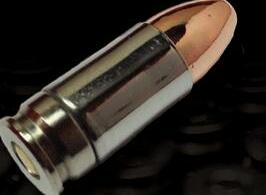






 STORY BY PHIL MASSARO • PHOTOS BY MASSARO MEDIA GROUP
STORY BY PHIL MASSARO • PHOTOS BY MASSARO MEDIA GROUP
Sitting in one of my favorite deer spots – a small hilltop we referred to as “Mt. Paul” in honor of my grandfather – I was enjoying the November sun on my face. It was pleasantly mild for Thanksgiving weekend, and I was actually getting
drowsy until I heard the signature rhythmic footfalls of a deer walking through the fallen oak leaves. The buck wasn’t a monster, but was mature and would fill the freezer, so my old .308 Winchester came quickly to shoulder, and I sent a Sierra hollowpoint through that buck’s heart, ending both the hunt and his life quickly.
While discussing hunting bullets, which happens very often in any
hunting camp, I’ve had some guys insist that using a hollowpoint bullet on deer or similar-sized game is nothing shy of insanity. “You’re looking for trouble! Those things are damnednear explosive, ya fool.” At one point in time, the gentleman might have been correct, but not all hollowpoints are created equally; in fact, many modern hollowpoints rank among the toughest bullets available. Let’s look at the
Where they were once shunned in deer camp for their unwelcome effects on game meat, today’s versions ‘rank among the toughest bullets available.’Hollowpoint rifle bullets come in many forms, and each can have a unique application.
history of the hollowpoint bullet and how it has evolved.
WHEN CARTRIDGE RIFLES finally took root in the latter part of the 19th century, velocities increased considerably in comparison to the muzzleloaders, but it seemed that there was no end to the desire for more velocity. Even

before the jacketed bullets appeared on the scene, the lead projectiles were hollowed out at the nose – not in an e ort to increase expansion, as that would come later, but in order to reduce weight. The theory was that if the weight of the bullet could be reduced, the velocity would increase, giving flatter trajectories. Couple that
design with the expansion associated with pure lead projectiles, and you can see where the hollowpoint’s reputation for violent expansion came from.
As black powder gave way to the newfangled smokeless powder, the pressures and velocities increased to the point where the lead bullets couldn’t handle the heat. The solution
North American Ammunition Company was founded in 2019 with a focus on hunting big game animals. We introduced our first offering in December of 2019 and have continued to add cartridges ever since. We use top of the line gear and components to produce consistent, premium individually loaded ammunition for your next hunting adventure. Our direct to customer business model allows us to offer custom and semi-custom ammunition, our own house recipes, and reloading services. We produce custom ammunition to fit your needs.


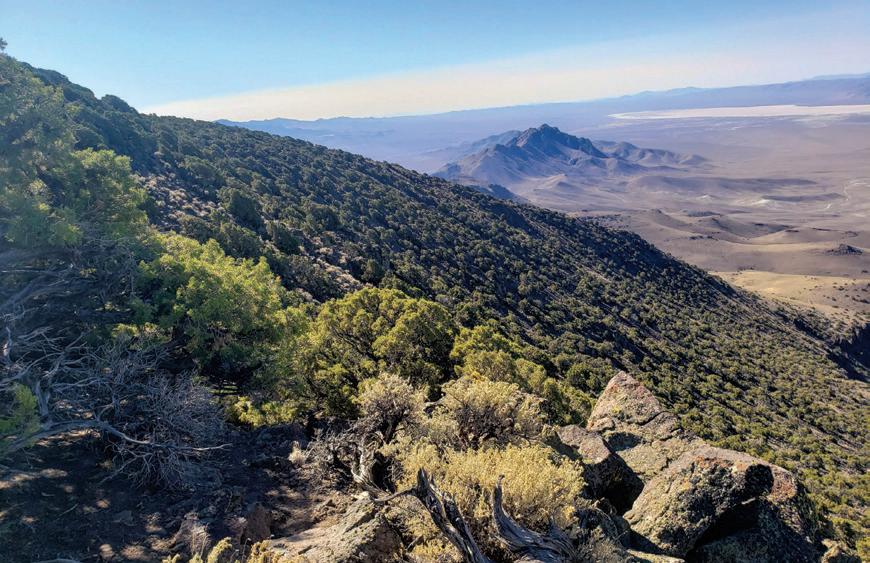


was to encase the lead with a jacket of copper, which was hard enough to resist the e ects of the higher velocities yet was still soft enough to be engraved by the rifling in the barrel. Completely encasing the lead core in that copper jacket resulted in a bullet
that o ered excellent penetration but very little expansion. While the full metal jacket bullets were prescribed for war, things didn’t work out so well when it came to using these projectiles on game animals. To ensure that the hunting projectiles would expand

reliably (thereby destroying vital tissue to result in a quick, humane kill), either a small section of the lead core was exposed at the nose of the bullet, or a hollow cavity was employed once again. If the jacket was skived, or if the thickness was reduced toward the front of the bullet, expansion would increase.
Modern bullets designed for precision shooting – most often referred to as match-grade bullets –often employ a hollowpoint with a very fine hole at the meplat. This is to keep the nose of the bullet as uniform as possible. The designers of these bullets do not take any terminal performance into consideration, as the bullet’s job is over once paper is ripped or steel is rung. Quite often, the bullet jackets are thin, and these bullets are extremely frangible; this is probably why the gentleman opined in the manner he did when it came to using a hollowpoint on deer. He wasn’t completely wrong, as match bullets and big game really don’t go together well.

































WHAT HE DIDN’T understand was that I was using Sierra’s 165-grain GameKing hollowpoint boattail (No. 2140). It was modeled after the 168-grain MatchKing bullet, but has a thick jacket and is absolutely designed for hunting game as large as elk and moose, even in a magnumclass cartridge. With a crimped nose –in order to resist meplat deformation – this bullet delivers fantastic accuracy and has been a wonderfully
Sierra also o ers this bullet in 7mm diameter at 140 grains, .277-inch diameter at 140 grains, and 6.5mm diameter at 130 grains. If you’re looking for a good deer bullet – and if you can find them – these GameKing HPBT bullets are excellent. Looking to other hollowpoints in the Sierra GameKing line, you’ll find models which are not suitable for deer



hunting, as they are designed for varmints and predators, for which you want that instant energy transfer.


The same can be said for the Berger, Speer and Hornady hollowpoint rifle bullets. Some models are designed as match (target) bullets; others are geared toward coyotes, foxes, woodchucks and prairie dogs; and some are perfectly suitable for big game species. It is up to you to do your research to determine the proper application of whichever cup-andcore hollowpoints you’re looking at. A little common sense can go a long way, as a jacketed hollowpoint for the .45-70 Government or .44 Remington Magnum will almost certainly be suitable for hunting big game, whereas the majority of hollowpoints for the .22250 Remington will be far better suited to small game species.
SWITCH THE BULLET construction from copper jacket/lead core to the monometal copper alloy designs –and I’m taking about the Barnes TSX here – and the hollowpoint essentially changes from optional to necessary. To be completely honest, I had severe issues with the original Barnes X design; most didn’t shoot well in my rifles, and those that did often failed to open at all and just whistled straight through like an FMJ. The revamp of

Federal’s Trophy Bonded Tip – a tough bullet and a great allaround choice – is a hollowpoint with a polymer plug at the nose. This feature now dominates the market. FEDERAL PREMIUM



the design that resulted in the Barnes TSX solved the issues, and that bullet not only shoots well but delivers the proper terminal performance. In fact, the Barnes TSX is one of the toughest expanding bullets on the market.

The Cutting Edge Bullets’ Raptor hollowpoint copper bullet also has a deep hollowpoint, but also skives the ogive of the bullet to have the front of the bullet intentionally break into small blades (doing considerable damage on the front side of the wound channel), while the base of the bullet remains at caliber and o ers the deep penetration of a solid-type bullet.
The polymer-tip bullets, which have become dominant in the market over the last quarter century, are essentially hollowpoint bullets with a plug at the nose. That plug serves two functions: to maintain the configuration of the meplat (keeping the ballistic coe cient as consistent as possible), and to act as a wedge that will initiate expansion


Like so many polymer tipped bullets, the Nosler AccuBond is really just a capped hollowpoint. FEDERAL PREMIUM

upon impact with the game animal. The concept is quite obviously a sound one, and polymer-tipped bullets have taken their seat at the head of the table. Even classic lead-tipped bullet companies have adopted the design, like in Sierra’s BlitzKing, Tipped GameKing and Tipped MatchKing bullet lines. Additional examples of the tipped bullet include Barnes’ TTSX and LRX; Hornady’s ELD-X and ELD Match; Federal’s Trophy Bonded Tip and Terminal Ascent; Nosler’s Ballistic Tip and AccuBond; Swift’s Scirocco II; Remington’s Core-Lokt Tipped; Norma’s EcoStrike, TipStrike and BondStrike; and Winchester’s Copper Impact.


ONE OF MY favorite dangerous game bullets makes clever use of a hollowpoint, though in an unconventional and unapparent manner. Peregrine Bullets, hailing from South Africa, has a most unique design in their VRG-3 BushMaster bullet. It is a homogenous copper alloy with a boattail and a healthy hollowpoint, yet it is capped with a flat bronze insert. The concept – a brilliant one, I might add – is that that pocket of trapped air is not easily compressed, and the impact of the bullet causes the compressed air pocket to drive the sidewalls of the bullet outward, giving consistent and reliable expansion. I’ve


These

.45 Colt.

used this bullet to take a number of Cape bu alo and other African game species, and it has never let me down. Reverting back to the rule of shunning match bullets for hunting, I only apply that for big game species. I have taken many coyotes, foxes, woodchucks and other small species with small-caliber cartridges topped with match-grade bullets, and they do work well. My battered .22-250 Remington absolutely loves the 53-grain Sierra MatchKing (No. 1400), and that bullet goes exactly where I aim it and is tough enough to dump the largest coyote. I’ve also used other brands, like the Speer TNT and Hornady Varmint, with equal results. If you like the way a match hollowpoint bullet shoots in your varmint rifle, have no worries about taking furbearers with it.







Ihope that you haven’t forgotten what it is like to be a 10-year-old on Christmas morning. Now imagine that you are a kid in a hunting and shooting family. You have been wishing, hoping and praying
that you will see that new gun under the tree. Can you remember this? Think of Ralphie in A Christmas Story. A lot of our hunting traditions are going by the wayside; I hope that this one has not.
I think it does a kid good to hope for the present he or she desires with all of their little heart. Hopefully Mom and Dad are on the same wavelength and

agree that they are ready for this firearm, and that long, slender package will be there on Christmas morn. This now leaves Mom and Dad to make the right choice and buy our little guy or girl the right shotgun.
Get ready for a lecture.
IF YOU GREW up “back in the day” like I
did, most kids got whatever shotgun that was handy shoved in their hands and were basically told to shoot it and don’t complain. Often the young shooter was laughed at after some old blunderbuss knocked them for a loop after they pulled the trigger.










Now let’s see. You give a kid a shotgun that doesn’t fit. It is too big
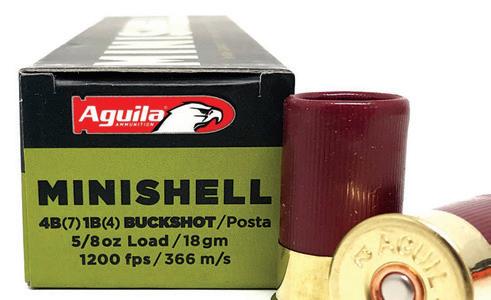

and too heavy, the recoil of which could make a grown man cry. Do we see a problem here? Friends, bad shooting habits can follow us for a lifetime; sometimes it is not our fault. The kid who was forced to shoot Uncle Bill’s Model 97 will never forget that it kicked like the proverbial mule. He developed a flinch that day, which
may very well follow him to the grave. Not long ago I attended a product seminar of various gun companies, and I saw people – people who I think of as better shotgun shooters than I am – with some bad flinches. You’ve seen it while using a gun that you are unfamiliar with. You call “pull” or the bird goes up, and the safety is on. You
yank the trigger, and the barrel takes a big dip downward. Now where might that flinch have come from?
I have mentioned before about working with young people at various shooting functions: National Wild Turkey Federation Jakes Days, Youth Day at the Range, and the like. Watch the kid that picks up an ill-fitting shotgun that is too big and heavy for them. Most will lean back and heave the gun to their shoulder, usually snagging the stock under their arm because it’s too long for them. A gun that fits them allows the young shooter to stand straight and push the gun towards the target as they shoulder it like we are supposed to do.
Think about this. It is important


to get a shotgun that fits your son or daughter now, not one that they will grow into. While you are waiting for them to grow into this gun, how many bad days in the field will they have? How many bad habits will they acquire because of a shotgun that is too big and heavy for them? So, I am going to o er you a couple of choices that you can consider for the young shooter’s first shotgun.
THE FIRST IS Remington’s (now RemArms; remarms.com) Model 870 Compact Jr. While most youth model shotguns feature a 13-inch length of pull, the 870 Compact Jr. has a 12-inch length of pull to better fit the smaller shooter. This feature is adjustable




so that LOP can be increased as the shooter grows. With all this and the reliability of the Remington 870, can over 10 million owners be wrong?
Next is the Mossberg 500 Bantam All Purpose (mossberg.com). This gun starts with a 13-inch length of pull; however, the Super Bantam model gives you a 12- to 13-inch adjustable stock, and multiple barrel lengths are available. Other options include 12- and 20-gauge and .410 bore, but I would go for the 20-gauge; don’t start kids with a .410. I know that it may have been your first shotgun, as it was mine. The .410 is really an expert’s gun and not necessarily a kid’s gun, so let them shoot the 20-gauge with lowpowered shells.

Buying the right shotgun for your kid – at the size and ability they’re at now – will go a long way toward their developing correct shooting skills and staying happily engaged in target shooting and/or hunting.

Most of us know that Henry Repeating Arms (henryusa.com.) makes some very fine lever-action rifles. You may not know they make several shotguns, and one is the Henry Lever Action .410. The Henry .410 Lever Action shotguns now feature side loading gates for expediently topping o the magazine while in action. The six-shot tube magazines can also be loaded through the front of the tube and unloaded rapidly without having to cycle shotshells through the action. The 24-inch barrel model features screw-in chokes and ships with a full choke.
Another option here for an inexpensive .410 shotgun with the young shooter in mind (or for Dad if he wants to use a .410 with TSS loads for turkeys) is the Rossi Tu y (rossiusa.com) line of shotguns.
The Rossi Tu y .410 comes in two models, the 18½-inch barrel with cylinder choke and a 26-inch model with screw-in chokes. It is a great little gun for the kids and Dad to hunt with. It would also make a good “truck” gun.

DON’T FORGET THAT lightly loaded shells for the starting shotgunner are just as important as a gun that fits properly. Let them practice and shoot on paper with target loads.
If you are going to turkey hunt, save the heavy stu for the woods. Remington (remington.com) o ers their Managed Recoil System STS Target load, shell out another dollar or two for a box of shells that the kid can enjoy shooting. Another option is the Aguila Ammunition MiniShell (aguilaammo.com), a 1-inch shotgun
shell that is perfectly capable of shattering clay targets, but a lot more pleasant for the young (and old) shooter to use on the range.
Get that kid a shotgun for Christmas! Not just any shotgun, but one that fits them. Both of you will be glad you did. Merry Christmas to all my brothers and sisters in camo.
Editor’s note: Larry Case has been a devoted outdoorsman since he was a child. He will admit to an addiction to turkey hunting (spring and fall), but refuses any treatment. He enjoys the company of gobblers and cur dogs that are loud and people who speak the truth softly. Case served 36 years as a game warden in West Virginia and retired with the rank of district captain. You can check out his podcast and other stories at gunsandcornbred.com.
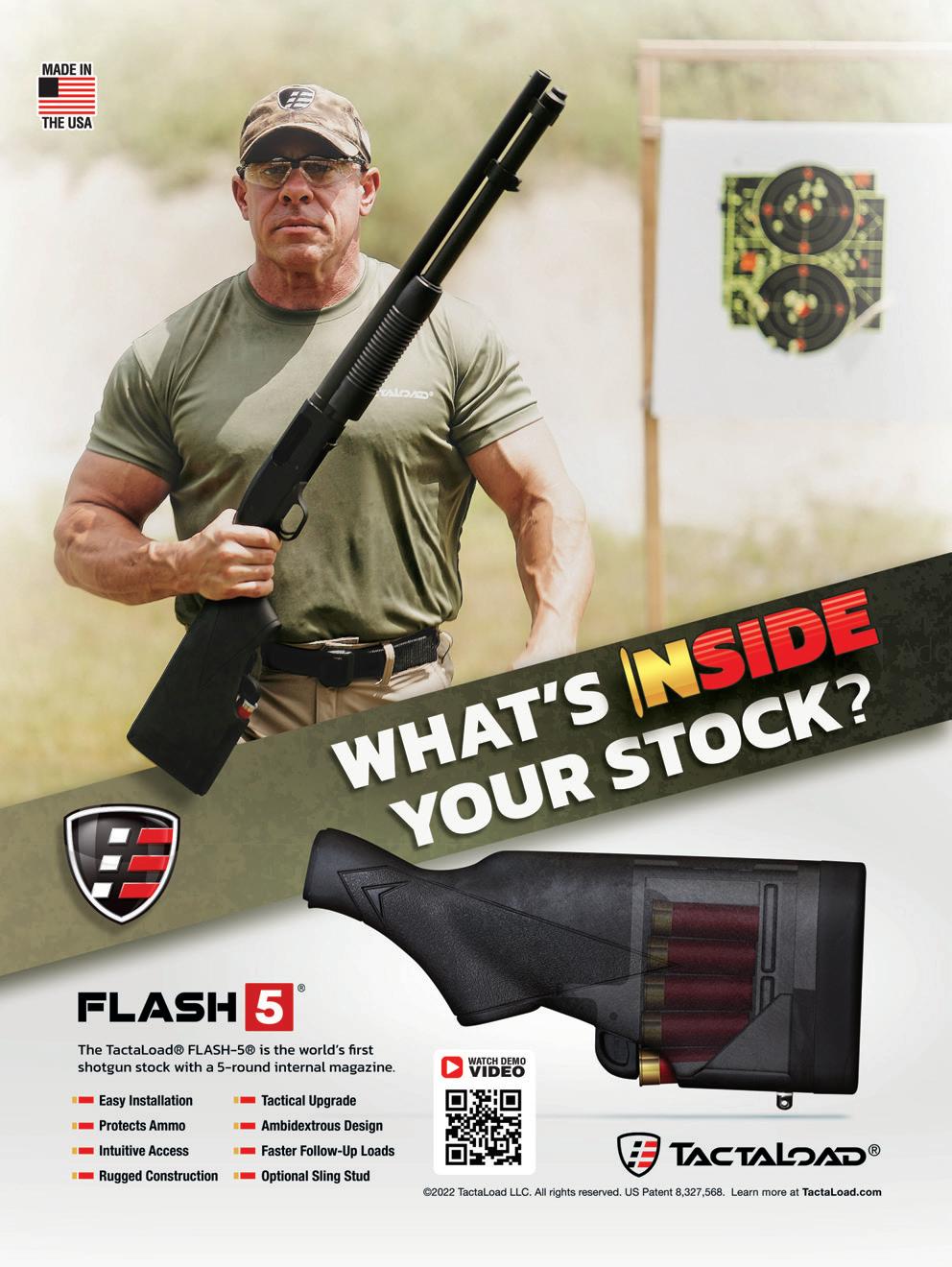
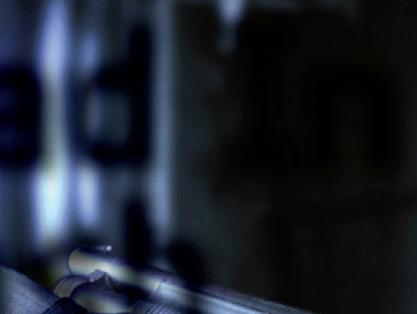


TactaLoad's easy-to-mount and indestructible fiveshell buttstock accessory provides shotgun shooters faster access to rounds than side saddle carriers.
 STORY BY PAUL PAWELA • PHOTOS BY TACTALOAD
STORY BY PAUL PAWELA • PHOTOS BY TACTALOAD
When a news reporter witnessed famous veteran Marshal John Slaughter walking down the street with his shotgun, the reporter asked, “Marshal, what are you going to do with that shotgun?” e marshal’s reply was “I’m going to use it to kill bad men, you damned fool.”
e shotgun has been one of the go-to weapons since the inception of America. While Winchester advertised that their 1873 rifle won the West, as a historian of the Old West, I would argue it was the shotgun that made the most difference in Old West gunfights. As many families traveled west in covered wagons, they were usually
armed with three types of guns: a revolver, a rifle and a shotgun. e shotgun was (and is) versatile because it could be used for many purposes like hunting game or self-defense. Well-known for protecting people and valuables, Wells Fargo had two people on the stage – one driver who drove the horses and one guard armed with a shotgun, thus immortalizing the term “riding shotgun” forever.
FOR THE AMERICAN civilian population, the pump shotgun has been the crown jewel go-to gun for years for protection against home invasions. So, when my boss and general manager for the American Shooting Journal asked me to review the new TactaLoad FLASH-5 buttstock, I must admit I was a bit apprehensive to do so. I must have compiled over several hundred case studies involving gunfights with a
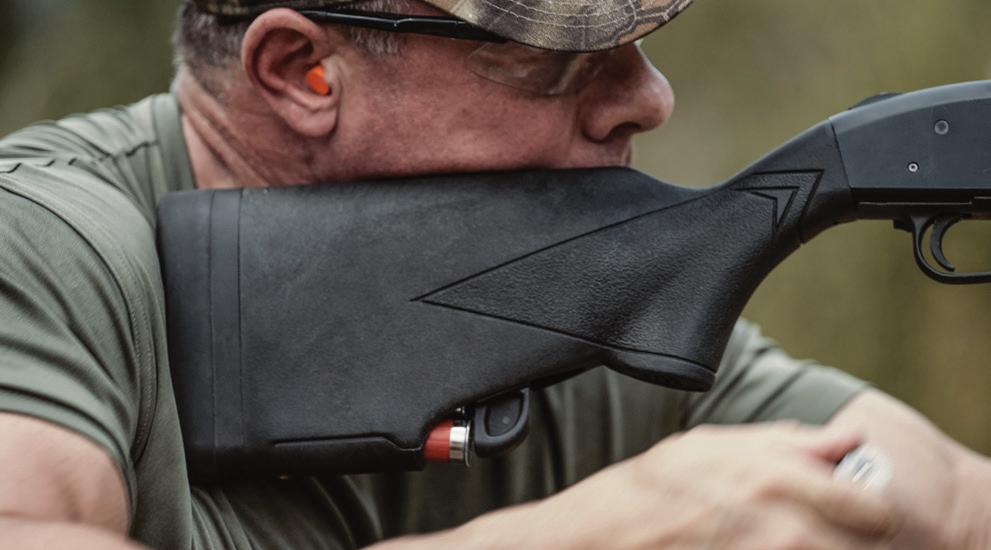
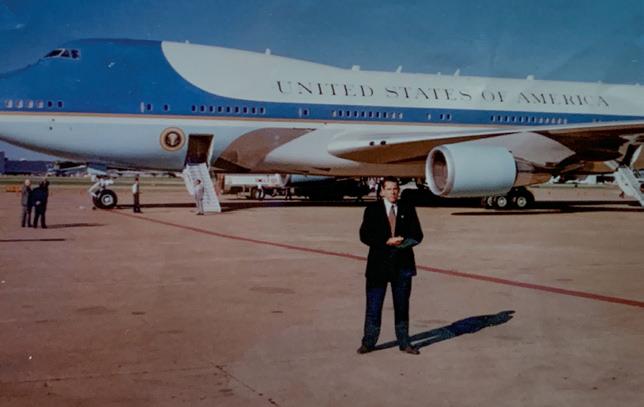
shotgun, and never, ever have I found a case where more than two rounds were used on a human being. at’s not to say it hasn’t been done, it’s just I have never seen it or heard of it before. en it got me thinking. I once knew a deputy sheriff who worked on a warrant squad and specifically went after outlaw bikers who were stealing guns and ordnance from the local military bases. e sheriff asked the breacher of the tact team, who carried a Remington 870 at the time, to say a “little hello” to the bikers from the sheriff’s department by putting one slug round in the biker’s engine block and one in the gas tank. As many as ten or more custom motorcycles were destroyed per raid. What a lot of reloading (or so I was told).
Still, I was not really sold on the idea. en my boss told me the inventor is a retired Secret Service agent. Now I was very interested. I have been in the business of testing equipment for going on 40 years, and most people who make a product are inventors or engineers who never use the actual product. I was reminded of that by the people at Natick lab who were designing test

they ever jump the parachutes they design, they said, “Oh no, that is why we use you as a test jumper.” So, what a concept, a product designed by an actual door kicker. OK, now I was all in.
MIKE LAVERGNE IS the inventor of the TactaLoad FLASH-5 buttstock. For whatever reason, I generally cringe when I talk to current or former federal


Lavergne began his law enforcement career as a Louisiana sheriff’s deputy. It was as a firearms instructor that he would have an epiphany that eventually led to his shotgun buttstock idea.
officers, but to be honest, interviewing Mike was a very pleasant experience.
Mike is a very humble man who comes from humble beginnings. He started his law enforcement career in a sheriff’s department in Louisiana. His first two years were as a reserve officer before going full-time with the department. When asked why Mike got into law enforcement, he said he always

had a mindset of a protector, so law enforcement seemed to be a good fit. When assigned to his unit (patrol car) as a rookie, a 12-gage pump shotgun came with the car. Being the diligent rookie he was, he took his car and cleaned it from top to bottom, including his pump shotgun. Much to his horror, the previous officer had put chicken bones and paper napkins down the barrel, which is shamefully more common than one might think, even to this day. us, a lifelong love-hate relationship with the duty shotgun began for Mike.
After a stellar stint with the sheriff’s department, Mike had a passion to become a federal agent and followed his dream to become a Secret Service agent. When Mike served warrants and arrested criminals, he used a 14inch Remington pump shotgun. He would even go on to become a firearms instructor. Once again, the shotgun was part of the inventory he taught. e Remington shotguns came with buttstocks that had shell
Tap Rack Holsters is a leading provider of premium American-made gun holsters and knife sheaths. Our products are the result of 40 plus years of combined experience in the military and law enforcement field using American made materials. Every Tap Rack holster and sheath is handcrafted using extreme care, precision and built to last because we’re dedicated to providing premium quality products our customers can rely on.

feeders that were on the sides of the buttstock. Sometimes they worked, sometimes they did not. Also, they only accommodated four shells, two on each side. So, there was always an extra round stuffed around somewhere because slugs and 00 buck come in boxes of five.
THIS WAS THE start of Mike’s epiphany of what would become the reality of the TactaLoad FLASH-5. At first glance it looks simple, but the number of hours it took to get to the point of perfection is mind-boggling. Mike went through several different buttstocks, having to saw them in half. He used machine welding, carbon fiber material with the right epoxies and different types of rubber bands to get just the right tension on the shell retainer. He then made 3D-printed prototypes and had different specialists give their input. Lastly, he farmed the product off to the main people who know how to run shotguns, such as competition shooters, law enforcement and military personnel. Why? Because the good Lord knows if anyone can find ways to destroy anything related to firearms, it’s those three categories of people!
So, what’s the bottom line you might ask?
Priority one for any head of household is the protection of the family. Man or woman, the pump shotgun is not only economical but can be utilized with a great deal of simplicity. If you have any of the common pump shotguns, which are Remington 870 and Mossberg’s 500, 535, 590, 600, 835 and the Maverick 88, the TactaLoad FLASH-5 is the perfect accessory. It is totally indestructible, and it is easy to put on.
As all the cool guy operator instructors will tell you, if you shoot the beast, you must feed the beast immediately. e TactaLoad FLASH-5 has easy accessibility to load shotgun rounds into the buttstock as well as the simplicity of loading the shells from the buttstock into the gun, and this can be accomplished with or without gloves. (Loosely translated, it will work under duress.)
LET'S LOOK AT the positives of the product itself. e company is made up of former United States professional law enforcement and military personnel who know what it’s like to use products lives depend on. Check one. It is made in the United States. Check two.

e inventor is a dedicated man who believes in God and uses his product to protect his greatest investment (as any of us are blessed to have), his own family. Check three.
At a recent major retailer industry conference, TactaLoad took the best new accessory award right out of
the gate, which speaks volumes unto itself. Check Four.
Finally, the TactaLoad is affordable. Compare its price point against modern side shell carriers and you will find that not only does the TactaLoad beat its competitors’ prices, it’s also faster than side saddles for tactically reloading shotguns. Check five.
When adding up those five positive checks in total, you get checkmate for the TactaLoad FLASH-5. If you own a Mossberg or Remington pump shotgun, this is a must-have add-on accessory. For more information on TactaLoad, go to tactaload.com.


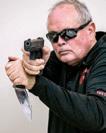
In the past couple of years, we have lost some giants in the self-defense industry. I hope to address many of these legends, especially the ones I knew who made an impact on me in my life and impacted the lives of others too.
Fewer deaths impacted me more
than that of Richard “Dick” Marcinko. It was December 25, 2021, when I received notice that Marcinko, the founder of SEAL Team Six and the founder of Red Cell, had died. Even though I knew he was in his 80s, it was hard to believe this legend in the counterterrorism world could have passed away.
I was honored to have called Dick Marcinko both a mentor and a friend, but I always addressed him as “Sir.”
For transparency and clarity, I did not serve with Marcinko in his 30-plus years of dedicated service, though I did have the honor of receiving training and mentorship from some of the men who were plank owners of SEAL Team Six, and I had the opportunity to train with other former members of SEAL Team Six.
HOW I CAME to know Marcinko was
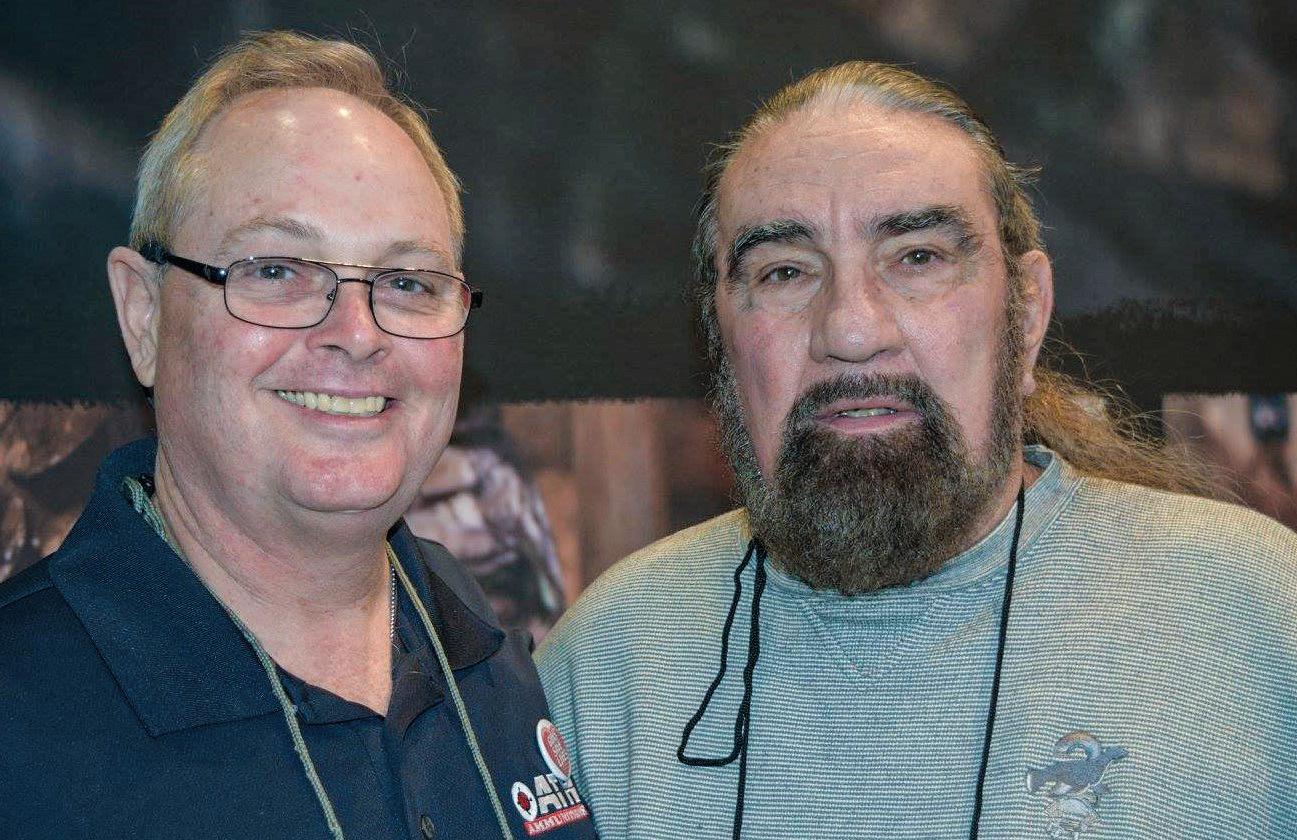
meeting him at his first book signing event for his (now) famous bestseller Rogue Warrior, after he retired from the Navy. I was formally introduced to him by my military Special Forces/Ranger Hall of Fame mentor, Gary O’Neal, who is also legendary in the Special Operations community. The two were very close friends. As a writer, I made a sojourn many times to the mecca event, the SHOT Show where the two were sponsored by di erent vendors. Then I attended the Special Operations Charity Network American Warrior Legends Night. I had the privilege of listening to these two at several roundtable discussions, many times about how to win life’s battles and other pearls of wisdom.
The majority of people know of Marcinko’s exploits, so I do not feel there is any need to go into full details about his life, which can be read in his books Rogue Warrior and Red Cell. Other than this, the man started without a high school diploma; when he wanted to enlist in the Marine Corps, he was rejected for that very reason, so

he joined the Navy.
A highlight of Marcinko’s career was that his leadership saw exceptional potential in him, and they wanted him as an o cer, so he became one and made it all the way to commander. Marcinko was one of the Navy’s most elite SEALs, and he also had outstanding combat experience participating in what the Navy called “the most successful SEAL Operations in Navy history” during the Vietnam campaigns.
After the failed hostage rescue of Americans in Iran, Marcinko – of all the Navy o cers in the U.S. military –was handpicked to organize, pick, and train 75 men in hostage rescue and counterterrorism designed to infiltrate behind enemy lines deep in their own backyard. They would become known as SEAL Team Six, and their specialty was oil rigs and ships. Over time, their missions branched out to counterproliferation of weapons of massdestruction.

SEAL Team Six would become recognized as some of the best shooters in the world, as their ammo allotment was more than the entire Marine Corps. Many will argue there are no better warriors in the world –well, maybe their Army counterparts might and do, but I digress.


Commander Marcinko certainly made the world a much safer place, as his blueprint for counterterrorism has been a success for not only SEAL Team Six but counterterrorist teams throughout the world. Navy SEAL Admiral Eric Olson, who oversaw Operation Neptune Spear, summed up Marcinko’s life best when he said, “He was a spirited rogue for sure, but we are better o for his unconventional service!”
IN ONE OF many sit-down talks I had with Marcinko at the Special Operations Charity Network American Warrior Legends Night, I asked him what the most important secrets of leadership were. What he did was direct me to his book Leadership Secrets of the Rogue Warrior: A Commando’s Guide to Success.



The Ten Commandments of SpecWar, in his words, are:
I am the War Lord and the wrathful God of Combat and I will always lead you from the front, not the rear.
I will treat you all alike – just like sh*t.
Thou shalt do nothing I will not do first, and thus you will be created Warriors in My deadly image.
I shall punish thy bodies because the more thou sweatest in training, the less thou bleedest in combat.
Indeed, if thou hurteth in thy e orts and thou su er painful dings, thou art Doing It Right.
Thou hast not to like it – thou hast just to do it.
Thou shalt Keep It Simple, Stupid.
Thou shalt never assume.
Verily, thou art not paid for thy methods, but for thy results, by which meaneth thou shalt kill thine enemy by any means available before he killeth you.
Thou shalt, in thy Warrior’s Mind and Soul, always remember My ultimate and final Commandment. There Are No Rules – Thou Shalt Win at All Cost.
Marcinko’s commandments were not only designed for our most elite warriors who protect this country, but they also work in general as the cornerstone of success for anyone in life. As Marcinko pointed out, WAR is an acronym for we are ready. Why? Because life is a struggle for survival, success and dominance. Life is war. It is an economic war, a political war, a social war and a personal war.
One of the last things he ever imparted to me in life was in one of his books, which he autographed for me. He wrote, “To Paul on Life Always Attack, Attack, and Attack – Win at all Costs!”
From left to right: Michael E.
me he loved working with Six and
was awarded the MOH for rescuing two downed Navy pilots in Vietnam, which


Marcinko’s
Goodbye, Sir. You will never be forgotten but you will be sorely missed. Rest in peace.
in the
Bat*21. Later, when he was in a gun fight against 200 to 300 enemies while calling in air support and protecting the rear element, he was shot in the head. At the time, Thornton was with Norris and went back for him. He carried an unconscious Norris, saving his life, which would earn him the MOH. It would be the first time two MOH recipients were on the same mission with one rescuing the other. A statue immortalizes the two at the Navy SEAL Museum in Fort Pierce, Florida. Norris would get out of the Navy and join the FBI; he was in the same class as Edmundo Mireles, the hero of the FBI shootout in Miami. Norris would later become famous again as a plank owner of the FBI’s Hostage Rescue Team, or HRT, that worked both with Delta and SEAL Team Six.
Editor’s note: For realistic self-defense training, see assaultcountertactics .com. Author Paul Pawela is a nationally recognized firearms and self-defense expert based in Florida.





Thanks to cop shows on television, we all know that “you have the right to remain silent. Anything you say can and will be used against you in a court of law.”
That’s part of your Miranda Rights, and as an armed defender in the aftermath of a self-defense shooting, it is absolutely true – whether an o cer reads your rights or not. But just because you have the right to remain silent, it doesn’t
mean you shouldn’t say anything. It is almost always advisable for an armed defender not to make a detailed statement to police without the advice of counsel in the wake of a shooting, but it’s important to identify yourself as the one who was attacked and to assert your self-defense claim. Saying anything more increases the risk of jeopardizing your legal defense. In some circumstances, however, it could be worth taking that risk.


Knowing what to say to law enforcement o cers in the wake of a self-defense shooting – and knowing
what not to say – might be the most di cult and dangerous decision an armed defender will have to make (aside from the decision to use deadly force in the first place). Don West, criminal defense attorney and national trial counsel for CCW Safe, says, “There is no clear answer that best serves everyone in every situation,” and he equates the perils of speaking to law enforcement after a self-defense shooting to “holding a square dance in a minefield.” While there are no hard and fast rules for armed defenders on what to say to the police, we can o er some practical
guidance for when you’re forced to use deadly force and police begin their investigation.“There is no clear answer that best serves everyone in every situation,” says Don West, criminal defense attorney and national trial counsel for CCW Safe, about speaking to law enforcement after a self-defense shooting. He equates the perils therein to “holding a square dance in a minefield.” (SHUTTERSTOCK)
guidance to inform your judgment.
In the wake of a self-defense shooting, most armed defenders are both physically and mentally compromised. Don says, “It is impossible to predict how the trauma of the situation will a ect you and how clearly you are thinking.” This is common knowledge in the law enforcement community, where it is standard practice for o cers involved in a shooting to wait 48 to 72 hours – two full sleep cycles – before giving detailed testimony. After a traumatic, lifethreatening event, our brains just aren’t operating normally, and we risk saying something that is unintentionally wrong.

STEPHEN MADDOX UNINTENTIONALLY made factual errors during his testimony following a self-defense shooting.
Stephen is a CCW Safe member who was acquitted of murder, and he has asked us to share his story so other concealed carriers can learn from his mistakes. His biggest mistake, arguably, was submitting to a police interrogation without counsel the night of the shooting, unaware of how psychologically impaired he was. He gave incorrect answers to the most basic questions such as his current address and the number of children he had. Stephen wasn’t trying to misrepresent himself; he was just in trauma.

While an armed defender is illadvised to make detailed statements to
law enforcement o cers without the advice of a lawyer, it is also ill-advised to say nothing at all. An armed defender can legally declare, “I have the right to a lawyer, and I’m not going to talk to you until I get one,” but by shutting down completely, the defender misses an opportunity to emphasize the selfdefense claim and point to specific evidence that may support that claim. If there were potential witnesses to the shooting, it may be a good idea to tell investigators. If there is a camera that may have recorded all or part of the confrontation, that could be valuable to your case. If there were multiple attackers and one or more fled, that is an important detail for police to know. It wouldn’t hurt to ask for a blood alcohol test if you know you aren’t under the influence. If you sustained any physical injuries during the attack, ask to have them photographed and documented before paramedics treat you.
Don West stresses that an armed defender can point to potential evidence without commenting on the significance of that evidence, and without providing specific details about the shooting. A defender can tell police about the existence of a security camera without suggesting what the footage might show. This is important because if any of the defender’s testimony conflicts with the physical evidence – even if the discrepancy
is a result of a misperception, a confabulated memory, or a simple misstatement – that testimony could be interpreted as a lie, unnecessarily raising investigator’s suspicions.
Stephen Maddox’s misstatements very likely set prosecutors against him and contributed to their decision to file charges. Don says the most challenging part of many self-defense cases is not dealing with evidence; it is overcoming the defender’s own statements.
IF ANY OF this sounds confusing, that’s because it is. The lesson for armed defenders is that dealing with law enforcement in the immediate aftermath of a self-defense shooting is a legally precarious endeavor. There are some things that you can say or do that could reinforce your self-defense claim, but there are many more things you can say or do that may put your legal defense in jeopardy.
Many defenders, confident they are justified and eager to prove it, volunteer too much information, and Don West warns, “No one can withstand questioning for several hours without saying something that is inconsistent or ill-advised in the wake of a traumatic event.” Other defenders say too little and come o as uncooperative and aloof, potentially raising investigator’s suspicions regarding the shooter’s motives. There is no script. Steve Moses warns against saying something definitive like “I was attacked and forced to defend myself.” You want to convey that sentiment, but you want to say it in a way that fits the context of the moment and is authentic to you. Identify yourself, make your self-defense claim and point out evidence that may help your case. Be authentic. Cooperate with investigators, but when in doubt, shut your mouth.
Editor’s note: Shawn Vincent is a litigation consultant who helps select juries in self-defense cases, and he manages public interest of high-profile legal matters. Mr. Vincent is also a regular contributor to CCW Safe’s news and podcasts.




 STORY BY NICK PERNA • PHOTO COURTESY OF CONCORD POLICE DEPARTMENT
STORY BY NICK PERNA • PHOTO COURTESY OF CONCORD POLICE DEPARTMENT
All street drugs are bad.
Cocaine, methamphetamine and heroin, among others, pose a constant threat to our society as a whole. There is an entire illegal economy worth hundreds of billions of dollars worldwide for manufacturing, distributing and selling these poisons. These drugs have killed millions of people and there is no end in sight.
But the pound-for-pound champ in terms of lethality is fentanyl. Unlike meth, coke or heroin, fentanyl is currently used by physicians for pain management. It’s often used on patients receiving major surgery.
However, like many prescribed medications, fentanyl is routinely abused by those who are addicted to it. When compared to the closest street drug, heroin, fentanyl is much more powerful. This means it takes smaller amounts to get high. This appeals to those who seek out and are addicted to depressant-type drugs. It means they spend less to get high and a little goes a long way.
Fentanyl has changed the landscape of American society. As a cop I’ve become accustomed to seeing, reading and hearing about drug addicts using too much fentanyl at one time. When a little too much is taken, the user enters a zombie-like state. Often they appear asleep, sometimes while standing up. They also often get into this state while driving a car, causing accidents.
Then there are the times when they take even more. As a depressant, fentanyl
slows down the person’s heart rate and respiration. Take too much and you stop breathing and, eventually, your heart stops. In most cases this would mean death but that’s not always the case. Enter Narcan, the drug designed to counter the e ects of fentanyl. When someone is in a near-death state, Narcan can bring them back. It generally comes in a nasal injector basically like nasal spray, but designed to deliver medication to both nostrils simultaneously. Usually, all it takes is a couple of squirts and the person slowly comes back to life. That’s the good news. Here’s the bad. Most fentanyl users aren’t happy when they come out of their drug-induced haze. They prefer to be high to the point of death than to be sober. And, sadly, most have received a second (or third, fourth or fifth) chance at life since they have already been brought back from the brink of death by the administration of Narcan.
The truly unfortunate part is when
someone unintentionally comes in contact with fentanyl. Cops, firefighters, EMTs and emergency room personnel are particularly susceptible. And then there are the children exposed by selfish, addicted parents and others who are too far gone to make sure they keep their dope out of the hands of kids.
On March 26, 2021, O cer Aaron Khamosh was on patrol in the city of Concord, California. He was flagged down by a frantic driver. Inside the car he found a cop’s worst nightmare: a 2-year-old child who wasn’t breathing. All cops are trained in basic life support techniques, and O cer Khamosh’s training kicked in. He immediately began CPR. The baby didn’t respond. That’s when the driver told him the baby had gotten ahold of some fentanyl.
O cer Khamosh quickly grabbed his Narcan kit. He administered two doses to the baby, which allowed it to regain consciousness. The child was rushed to the hospital and survived. An
unidentified person was arrested on child endangerment charges for exposing the infant to the poison that was nearly fatal.
O cer Khamosh not only deserves credit for saving a life but he also deserves a pat on the back for exposing himself to the liability involved in using those life-saving techniques on a child. We live in a day and age where people will sue first responders anytime, and their lawyers see the opportunity to make a quick buck. O cer Khamosh put all that aside and focused on doing the right thing.
In this case, another young life was saved. Unfortunately, we know the danger from fentanyl will arise again.
Editor’s note: Author Nick Perna is a sergeant with the Redwood City Police Department in northern California. He previously served as a paratrooper in the US Army and is a veteran of Operation Iraqi Freedom. He also has a master’s degree from the University of San Francisco.




vlineind.com

V-Line’s new in-wall Tactical Closet Vault is finished in a rugged flat black powder coating and is outfitted with an all-steel MOLLE board on the door. The vault has been specifically designed to conve niently store and organize tactical gear. The three-point locking system with the Simplex quick-access push-button lock provides superior security on the corners of the door. The lock does not require batteries and will always be at the ready. It provides a unique and space-con scious way to secure firearms and your tactical gear, such as magazine clips, ammo pouches, flashlights and optional mounts for your home-defense weapons and other items, with the convenience of quick access. The door and frame protrude less than 2 inches from the wall, allowing it to be concealed behind a door or in a closet.



VAULT PRO USA vaultprousa.com Handgun Pro II standard features:
wall, allowing it to be concealed behind a
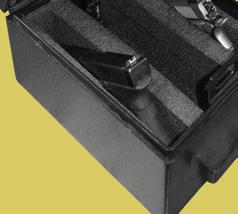

VORTEX

vortexoptics.com/viper-hd-3000-rangefinder.html
The Viper HD 3000 laser rangefinder gives you the tools to act quickly and confidently, with a 3,000-yard max range and a stunning HD optical system that lets you pinpoint big game faster at distance. Four target modes and two ranging modes mean you get the flexibility to range any shot on any hunt, making the Viper HD 3000 perfect for the treestand and the mountains.

flashfishing.net
Join Captain Steve Talmadge and his crew for a safe and exhilarating time shark and deep sea fishing out on the San Francisco Bay waters. Flash Sport Fishing Charters is one of the top fishing charters in San Francisco, offering exceptional fishing trips and tours to anglers of all skill levels. They offer several half-day and full-day guided charter and trip options. Just bring your fishing license and a meal – everything else is included! Fully insured in California and equipped with a U.S. Coast Guard Masters License.
Check out their rates and charter availability on their website.
Our Desert Eagle grips have undergone a redesign with improvements that are sec ond to none. First we removed almost 1/8 inch from the thickness of each grip. Then we enlarged the radius on the back edge of the grip to reduce the overall circumfer ence. And finally, we eliminated the need for two screws as well as the plastic insert that traditionally is needed for mounting the grips. Excellence in design and function, that is the goal of AlumaGrips.

The CovertCarrier is designed for “deep” cover or “back-up” use. It was created for small-framed single-stack semiauto matic handguns. Caliber options for the Covert Carrier range from .45 to .22. It can be fitted to a removable grip panel or adapted to the handle of a polymer pistol and fitted with our Universal Small or Large Rubber Sleeve.


The Space Cowboy Scoped Holster is a strong-side vertical-carry holster designed for the long-range handgun hunter. The holster can be worn on any waist belt up to 2 1/4 inches wide and features a tie-off leg strap for added stability. The holster can also be added to our popular Wyoming drop loop belt. Belt sold seperately.

MSRP: $185.
Bullard Leather uses premium Hermann Oak Leather to handcraft all their leather holsters, carry belts, wallets and knife sheaths. All products are handmade, and holsters are molded and boned to the gun for a snug, firm fit. Bullard Leather has an array of products, colors and exotic skins. Pictured is the Defender Holster for a Taurus Judge Magnum with .44, .45 and .410 bullet loops. Stop by Bullard Leather’s location in Cooper, Texas, or visit their online store.



hatchoutwest.com

The most versatile all-in-one bipods on the mar ket that meet the high expectations of all types of shooters.

• Patented leg design locks in any position when setting up
• Incredible height range (6.5”-27” Standard and 7”-36” Tall)
• Two lengths: Standard 27” and Tall 36”
• Two head choices: Slide-on or ADM clamp style

• Made in Idaho by a family-owned business

reptiliacorp.com
After more than two years of develop ment and testing, Reptilia is proud to announce the Recc·E Stock for AR-15/ M16- and AR-10/SR-25-pattern rifles. Designed at the request of a military end user, the Recc·E Stock features a constant cheek weld, ambidextrous QD sling attachment points, rubber buttpad, and a modular design that allows usage of a standard AR-15 carbine buffer system, or A5/SR-25 carbine buffer system by replacing the receiver exten sion (buffer tube) and forward portion of the stock. Weighing only 12.0 ounces including the proprietary AR-15-length receiver extension, the Recc·E stock is the ideal lightweight solution for the entire spectrum of AR-pattern guns, from compact to precision.

The initial preproduction run of AR-15-length Recc·E stocks will be extremely limited and available exclu sively through RSR Group for dealers, and direct to consumers at the above website. MSRP: $159.95.
tactaload.com
TactaLoad is a new company providing qual ity aftermarket acces sories. The FLASH-5 is a unique shotgun stock incorporating an internal magazine that offers the shooter instant access to five additional rounds of ammunition. The FLASH-5 protects your spare ammunition and feeds them out the bot tom of the stock fast!

If you loved Shell Shock’s lightweight 9mm cases, try our .380 ACP cases. More calibers coming soon. Lighter than brass, more powder capacity, greater consistency between rounds, and can be picked up with a mag net. Reduces ammunition weight and increases performance. Made in the USA. Shell Shock…Shoot it, Love it!
Our Savage Axis Picatinny scope mounts are the best option when you are looking for the most versatile base. Our scope bases feature a multislot design that allows you to quickly and easily mount your scope rings anywhere along the base. Our Picatinny bases are proudly machined in the USA.































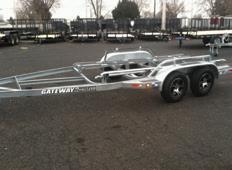
Redding engineers have developed a unique concentricity gauge, which uses the science of ergonomic design to im prove overall precision and ease of use.

The single-point contact-bearing surfaces are placed at an angle and made of hardened stainless steel, creating an ergo nomic positioning of the case and improving the ease of motion turning the case by making the action far more natural.


The new Slant Bed Concentricity Gauge features a large and easy-to-read dial indicator that quickly mounts in a factory-aligned base dead-on the centerline of the case.



The Lyman Ultimate Reloading System is the only kit you’ll ever need! Outfit an entire reloading bench with premium products designed to accomplish all steps in the reloading process. No other kit from any competitor can match this untouchable value! The Ultimate Reloading System includes top-of-the-line tools and accessories like our All American 8 turret press, Gen 6 Digital Powder System, Universal Case Trimmer, Pro 1200 Turbo Tumbler, and everything else needed to turn out high-quality rounds fast! Take your passion to the next level with the Lyman Ultimate Reloading System!


presentarmsinc.com
Present Arms is a veteran-owned small business that manufactures professional firearm tools and workstations. We offer quality and affordable products to service and build firearms.

Whether a sportsman, armor er or military, our solutions are cost-effective, armorer-approved, field-tested and built to meet the needs of sportsmen and professionals everywhere.
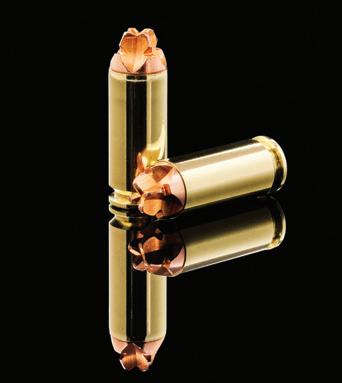

black-hills.com
Black Hills Ammunition’s 10mm HoneyBadger has deep flutes designed for optimum terminal perfor mance without reliance on hollow points. The bullet penetrates deeply, cutting through bone and mus cle to get to vitals. This is important when relying on your handgun for protec tion, including the possibil ity of bear attack. This is a solid choice for defense!
Even Santa would love to see a bottle of PrOlix in his stocking this holiday season! There is no product on the market to date that works like PrOlix; just see their ad in this publication and learn more over at their website! Let PrOlix make it a joyful holiday!

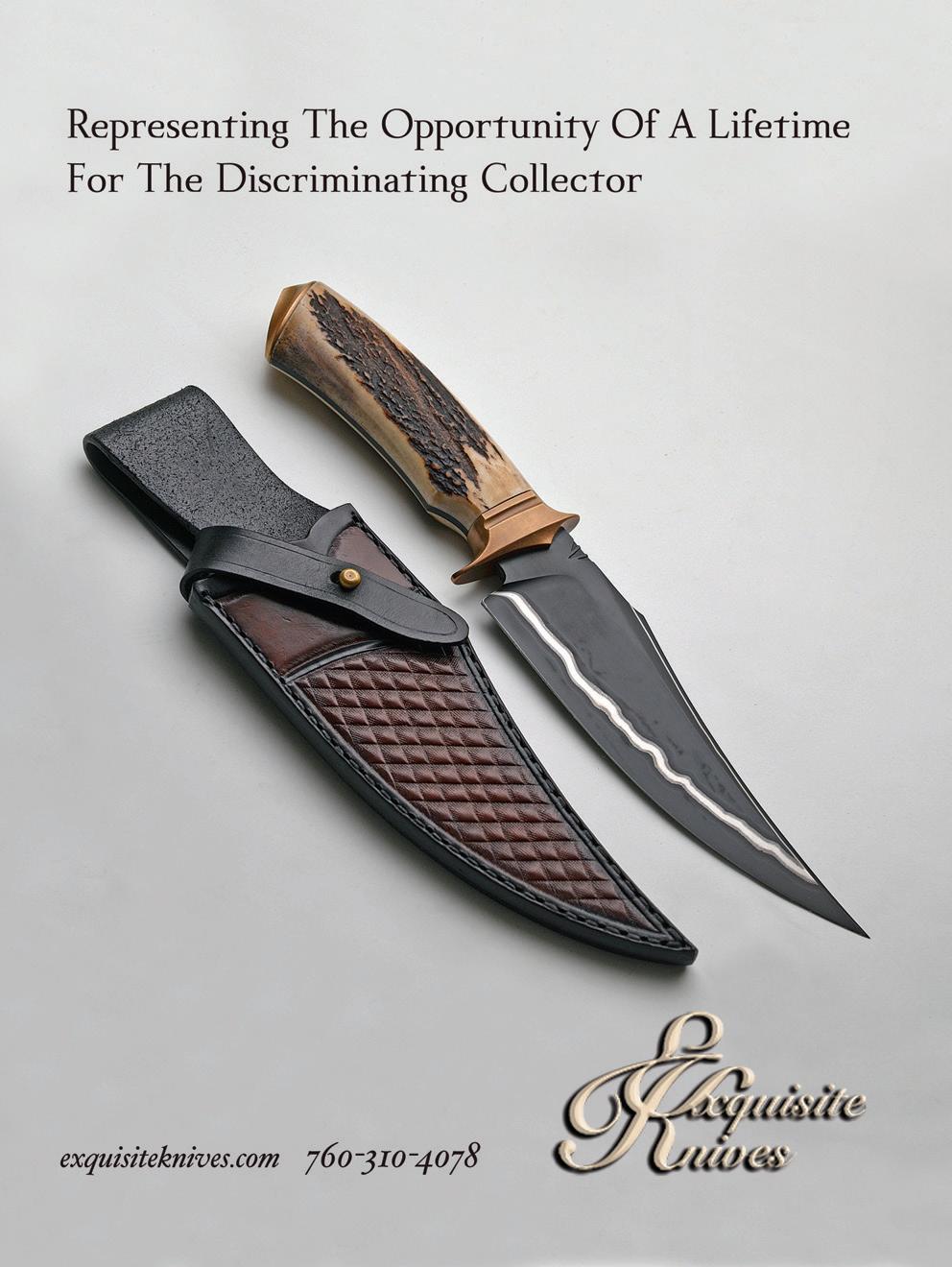

The Advantage Plus dries and deodorizes all types of footwear in one to four hours. The Advantage Plus is fan-assisted, dries two pairs of shoes at once and is compatible with all Peet DryPorts. Assembled in the USA and comes with a five-year warranty.
freedommeatlockers.com

Skirt steak, tri-tip, chicken and more! National and state award-winning fam ily-owned and -operated butcher shop since 1972.
Specializing in custom cutting, smoked meat and retail meat sales. Award-winning smoked meats, including 30 varieties of sausages, all made in-house, plus bacon. We have been awarded Best Ham in the United States!
We carry only the best steaks for our customers. We offer high choice-grade beef.
We have a full deli on the premises that will make your mouth water!
We pride ourselves in unique mari nades on skirt steak, tri-tip and chicken! No order is too small or too large!

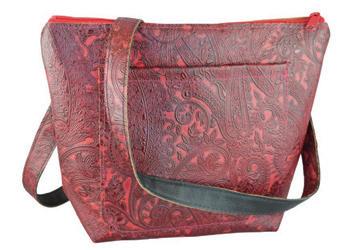

Our beautiful, handcrafted leather embossed and leather-lined concealed carry purses feature a special V-shaped pocket inside for your small pistol, plus a cut-resistant strap. All our products are made in Virginia. We offer patent-pending cut-resistant leather straps that can be purchased sepa rately. Offering fine hand crafted leather products since 2015.
This is the big boy – these are our heavi est, most insulating, most wicking socks, and most likely the warmest sock on the planet (excepting electric).


Ultrasoft bison fiber blended with fine merino wool means there is no prickly itch from these socks.
Will keep your feet warm and dry all winter long.
The Cat-2 Double Pistol case features a padded divider to separate the pistols and accessories. Its wrap-around zipper and lay-flat design allow for easy access. Also features a large external com partment with webbing for securing magazines and tools in the case. Available in tan and black.


tedblockerholsters.com
Our handsome suspenders are the best you will find on the market today. The quality top-grain leather used in our shop for these suspenders is sourced here in the USA, as are all the other components. With three color options you are sure to please the men in your life. Add a Derringer pouch and you have a very unique gift to give or keep!

verles.com

Verle’s has the Big Chief front- or top-load package for you. Smoking is made simple with the Big Chief, as all you have to do is plug it into a stan dard household out let. Just place your food (after brining or preparation) on one of the five racks that sit over the top of the drip pan. The smoker’s capacity is a whopping 50 pounds of meat or fish!

Our sleeping bag cover is a great way to protect your sleeping bag and add a little warmth. You can even sleep under the stars on a starry night! Roll your sleeping bag, pillow and sleeping pad up and it’s a perfect bedroll to keep all your sleeping gear organized.


highadventureranch.com

High Adventure Ranch, the oldest big game hunting ranch in Missouri, was founded by Charles Puff in 1983. The ranch has over 30 big game species, with an estimated 2,000 animals. Our guides have over 70 years of experience. The ranch offers lodging, homecooked meals and full-service meat processing.
Includes: smoker, five easy-slide chrome-plated grills, electric cord, drip pan, wood flavor pan, free bag of Smokehouse Alder Wood Chips, and recipe booklet.
MSRP $134.99, including holiday special of four extra bags of smoking chips – a $20 value!
EXQUISITEKNIVES.COM exquisiteknives.com

CAS of Argentina created “The Dragon.” This Damascus-steel wonder is just one example of the world-class custom knives found on exquisiteknives.com.
Some of the finest custom pieces ever made are in website owner Dave Ellis’s personal collection. Treat yourself today!

gentrycustom.com
New quiet muzzle brakes with suppres sor-length threads. Call Gentry Custom today at 406-388-4867.

and similar actions and barrels.
Known for outstanding AR parts and accessories, Luth-AR is now applying its design expertise to the rifle chassis market, beginning with the Modular Chassis Assembly for .22 rimfire. The MCA-22 has been designed and developed by Roth Performance in conjunction with Luth-AR.

The MCA-22 Rimfire Chassis allows users the best possible fit for .22 LR rimfire recreational, hunting and competition shooting. Easily install your Ruger 10/22 or similar receiver, trigger group and barrel into the MCA-22 Rimfire Chassis. The chassis accepts standard or bull barrels with the use of an insert.
octobercountry.com


Back in 1977 when the company was in its infancy, October Country Muzzleload ing was a hunting bag. One product. Today, the northern Idaho-based outfit offers a complete and thorough line of muzzleloaders and muzzleloading accessories, including ramrods, Pushing Daisies patches, Blue Thunder solvent, Bum blin’ Bear Grease, quality leather shooting bags, powder horns and handforged shooting tools. All exceptional quality goods for the hunter, shooter, collector and history reen actor enthusiast. October Country features products specifically designed and manufactured for cowboy action and black powder cartridge shooters. October Country has new products that include PowerBelt Bullets, Birchwood Casey, Uncle Mike’s, Ballistol, Hoppe’s, Cash Manufacturing, Hornady, Lyman and RCBS muzzleloading and black powder cartridge ball and bullet molds, as well as Lee Bullet Molds, to name a few.
camofacepaint.com
rtstactical.com

RTS is a group of military and defense equipment experts dedicated to building better armor and tactical equipment. Each product is designed to better serve real-world military and law enforcement personnel in the field with extensive testing and innovative technological development.
Bobbie Weiner, owner of Camo Face Paint, is the No. 1 supplier to the US DOD for all branches of the government. Bobbie also supplies the hunting industry with the same made-in-the-USA camo face paint. Face paint washes off with soap and water, nontoxic, odorless, hypoallergenic and a five-year shelf life.





imple desire put me on the trail to find a shorter barreled .44-caliber revolver to use as a belt gun. In other words, I had no complaints at all about the 7½-inch and 8-inch barreled guns in .44 Colt that I have been using, but I just wanted a shorter one. That quest led me to one of the 1872


Open Tops by Cimarron Firearms, in .44 Special chambering with a 5½-inch barrel and the Navy grip. This gun is noticeably smaller than my longer barreled guns with the Army grip, so I have tagged it as my “little .44.”
THE OPEN TOPS from 1872 have a colorful background. They were designed by Colt’s engineers, Richards and Mason. Those names are more often linked with the conversion revolvers from 1871
such as the Richards, the Richards Type 2 and the Richards-Mason six-guns which were all chambered for the .44 Colt cartridges. While those conversion revolvers might have used older parts from the percussion era, the 1872 Open Tops were made as new guns with newly designed parts – a real stepping stone toward the Peacemaker, which came out a year later.
There was very little variety in the Open Tops of 1872. They were
With its 5½-inch barrel and Navy grip, the revolver is smaller than the 7½-inchbarreled gun with the Army grip.

made, as far as I’ve seen, only with the 7½-inch barrel, and they were made only for the .44 Henry rimfire cartridge. To those of us who like centerfire cartridges, that seems like a step backwards, but not really. At that time, the .44 Henry was very popular, much more popular than the .44 Colt, as shown by the sales of the Model 1866 Winchester and other guns made for the .44 Henry cartridge. The 1866 Winchester had topped over 125,000 guns at the end of 1874, while the 1873 in .44/40 was just getting started. The greatest variant I have noticed in the old guns was in the grip; early versions were made with the Navy grip (which is the same as on the Colt SAA or Peacemaker), and some later guns were made with the larger Army grip as on the 1860s in .44 cap & ball. How long the Open Tops remained in Colt’s production is something I haven’t
been able to pin down. Some references say they were made only in 1872-73, while others say they were made up to 1877. Regardless of the exact dates, we know that the Open Tops were made in fairly few numbers; total production is said to be about 7,000 guns.
My tastes for authenticity are satisfied by assuming that the barrel on the Cimarron copy that I have was shortened after leaving “the Colt factory.” Cimarron, of course, imports their version of the Open Tops with at least three barrel lengths, and they’ve had them made in several calibers, such as for the .38 Special, the .44 Russian, .44 Colt, and .44 Special, plus the .45 Colt cartridges. I will say “Hats off to Cimarron!” because they sent an original Colt Open Top back to Uberti so the old gun could be copied very accurately. Other than the barrel lengths and being made for centerfire
cartridges, the only other difference is that the Uberti copies have a safety block in the hammer.
LIKE I SAID, this little .44 was to be used as a belt gun, so one accessory that I bought even before shooting the gun was a holster made by Oklahoma Leather, which came from Buffalo Arms Company (buffaloarms.com). What I picked was the Single Loop Mexican style for the 5½-inch barrel, which was priced at just $30.49. That holster was added to a cartridge belt that I’ve had for several years. With that outfit, I was ready to go.
The gun itself pleased me right away; the trigger pull is very good and the fit of the metal pieces and the grip could not be criticized. And while it is a .44 Special, as it is marked on the bottom of the barrel just behind the ejector rod head, my intention is


to use it with either .44 Colt ammo or .44 Russian cartridges. Both of those shorter cartridges can be used with excellent performance, and those cartridges also fit the era of the buffalo hunter that I enjoy representing.


JUST HOW MUCH this gun pleased me wasn’t realized until I shot it for the first time. That was done with a target posted at just 30 feet and shooting the gun while sitting at a bench and holding the gun with both hands. Many of these reproduction revolvers tend to shoot high, and I wanted to know where this .44 would be sending its bullets. I held as steadily as I could right at the bottom of the bullseye – a 6 o’clock hold. To my delight, that’s just where the bullet hit, at 6 o’clock right below the black. I fired the other four shots in the cylinder, making a rather
nice group with three of the shots very close together.
That answered my first question very positively; to hit with this gun,
you had to hold dead on the target right where you wanted the bullet to go. (Just the way we like ’em!) I really didn’t have further questions about the gun, but I did have some variance in the ammunition I used. Those first loads used 21 grains of Schuetzen 3Fg powder under the 220-grain bullet from Accurate Molds’ #43-220NR, which has a small groove around the bullet just for appearances to give it that “.44 Colt” look. (The old .44 Colt ammunition was outside-lubricated and had the exposed groove around the bullet to hold the lube.) Other loads tried used 21 grains of Olde Eynsford 2F powder under the same bullet. The Olde Eynsford powder load had obviously more punch, but the two loads seemed to hit about the same for both elevation and accuracy. Both loads performed very well.










Most of the old loads for the .44 Colt were listed as being loaded with more powder than what I was using. Powder charges up to 30 grains are shown in some of the old books and on at least a few old cartridge boxes. The 1916 Winchester catalog shows the load in their cartridges for the .44 Colt to be loaded with 23 grains of black powder. Some years ago, Mike Venturino took an old .44 Colt cartridge apart to see what it actually held, and that was 21 grains of powder. Following that “authentic” example, some of us have been using 21 grains of Olde Eynsford 2F ever since; from an 8-inch barrel, that crosses the chronograph at 766 feet per second. This gun with its 5½-inch barrel will generate just a little less speed.
I did more shooting offhand but with the two-hand hold. My best target shows all five shots in the black – though, at this time, I can’t remember which load was used to shoot that, but I believe it was with the Schuetzen powder. I’m not finished with the Schuetzen powder loads at all; in fact, I’ll increase the loading to 22 grains or maybe more, just to see how it performs. That’s called “tweaking” the load, and we tweak our black powder revolver loads just like our black powder rifle loads. Those future loadings might be reported on again after I have done even more shooting.
FOR NOW, I'LL simply say again how much this “little .44” pleases me and how I expect to be using it with certain regularity, perhaps even during the Black Powder Revolver Match at Buffalo Camp. It fits the criteria for that with excellence. And if you’d like to learn more about this gun and its brothers, visit the Cimarron Fire Arms website, cimarron-firearms.com. Their site currently says this model is out of stock, but Cimarron also has a list of dealers, and we must guess that some of them should still have some of these revolvers new and in the box. They’re really worth having, and this one of mine will be shot a whole lot more.



